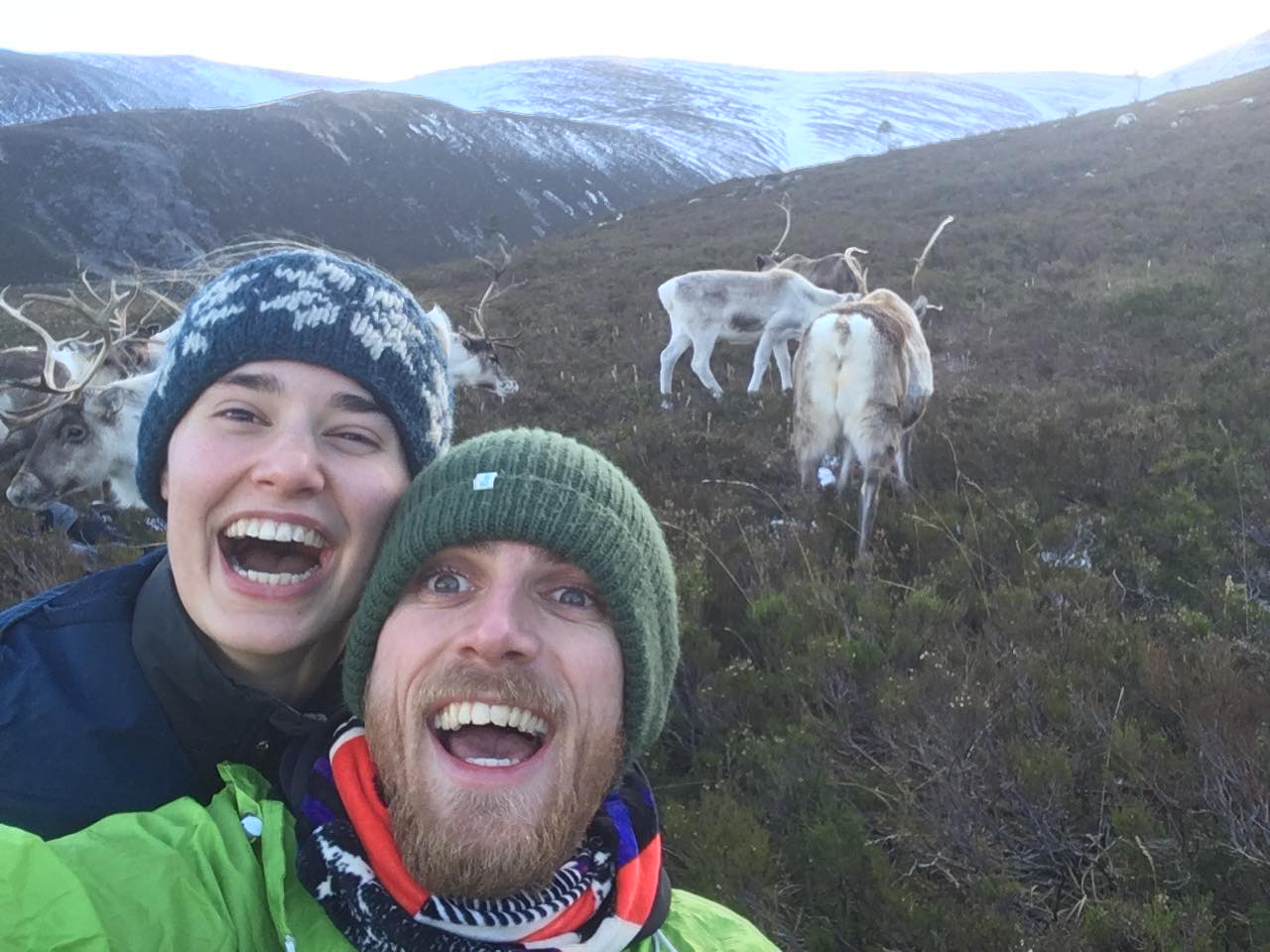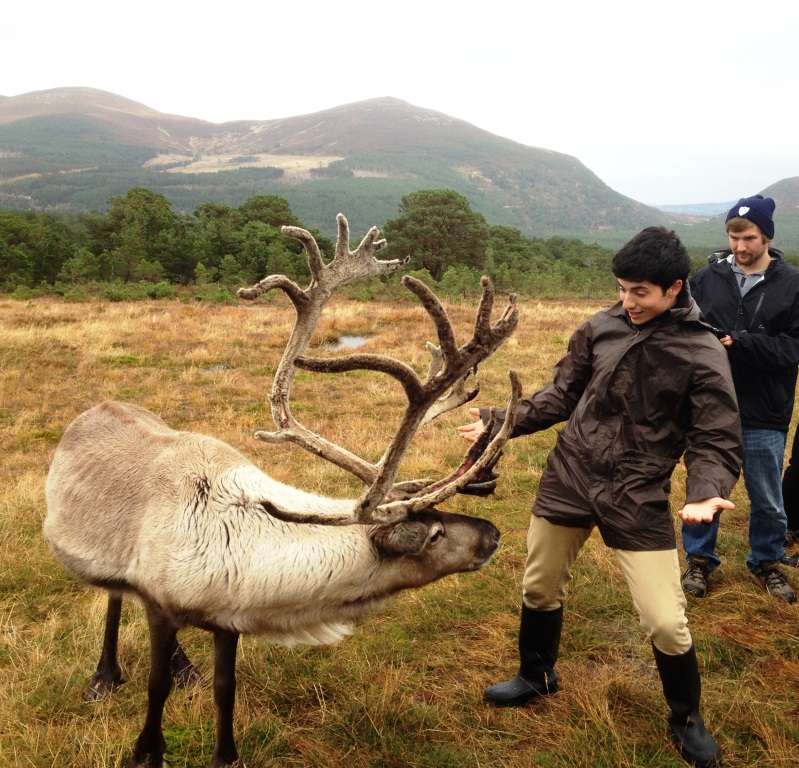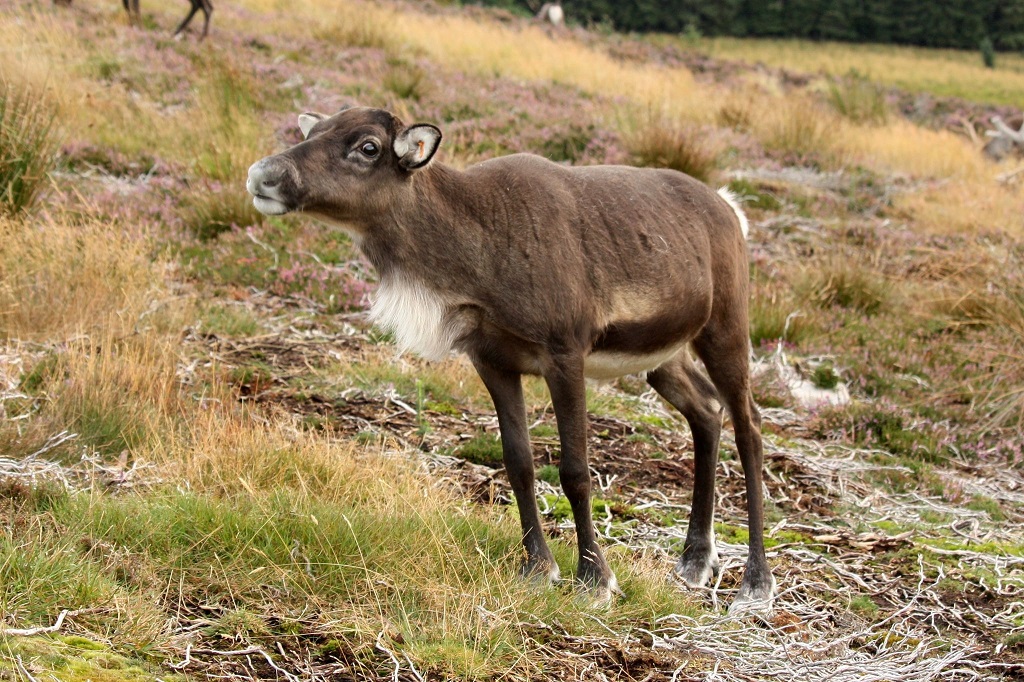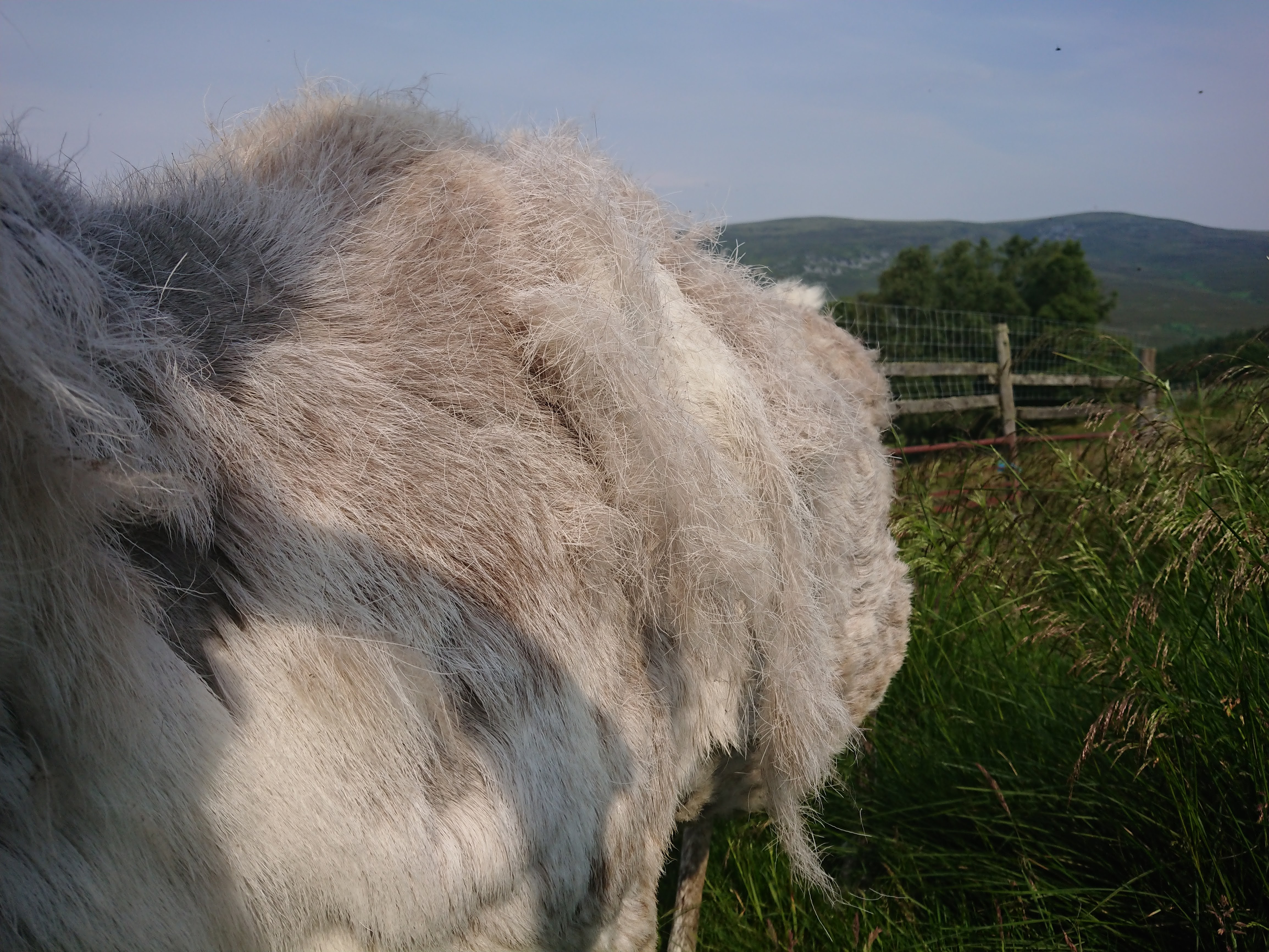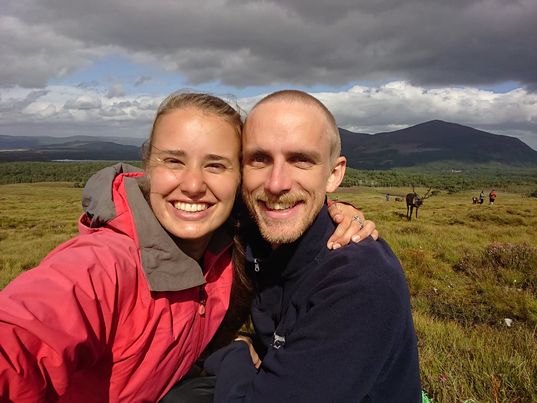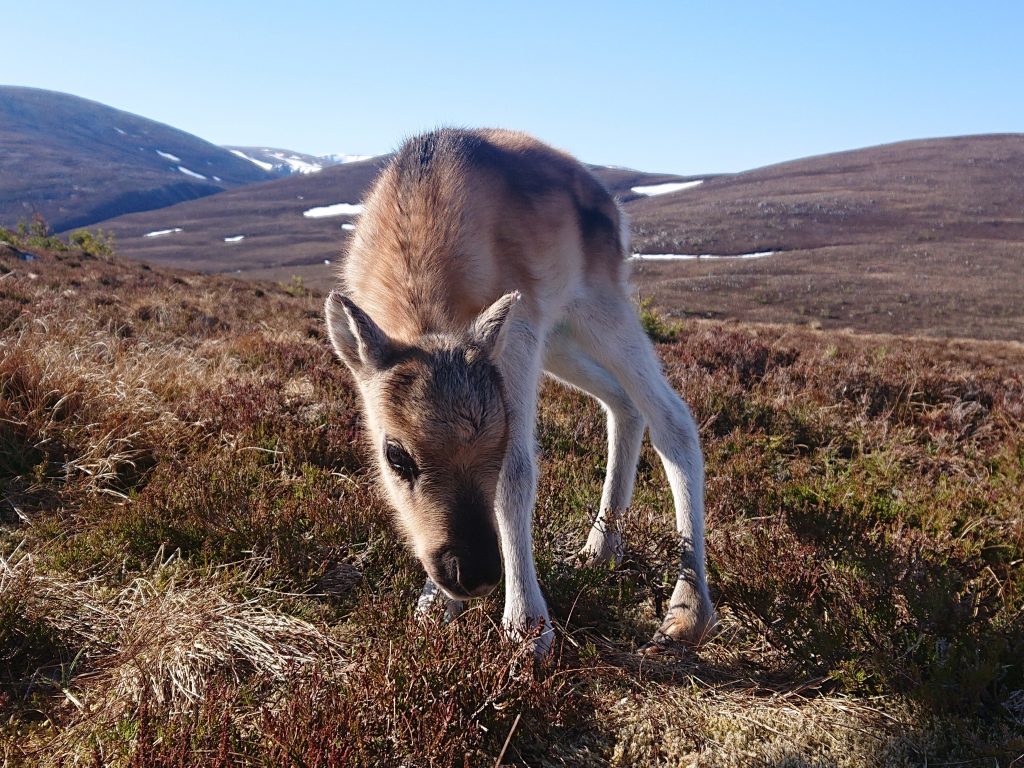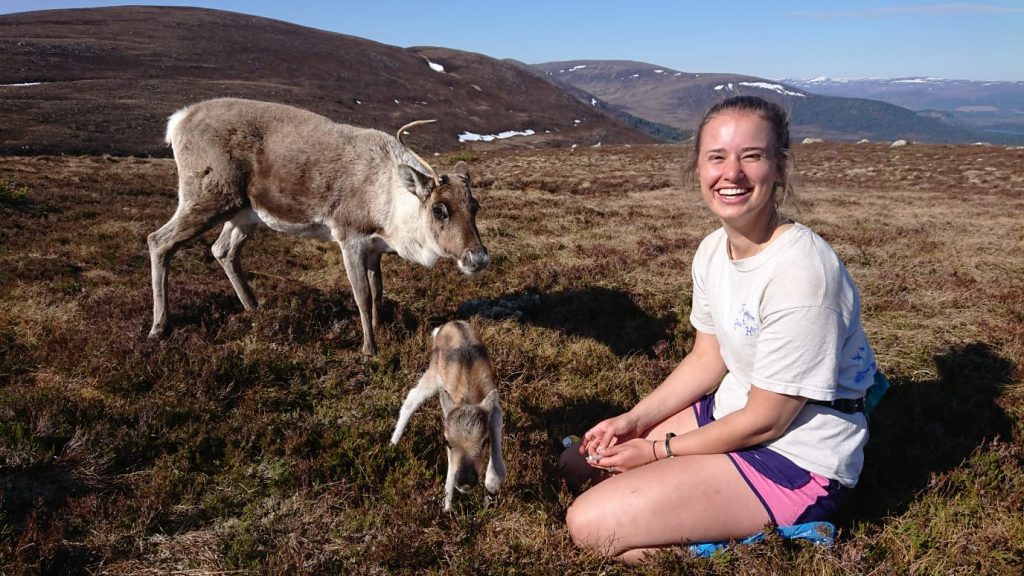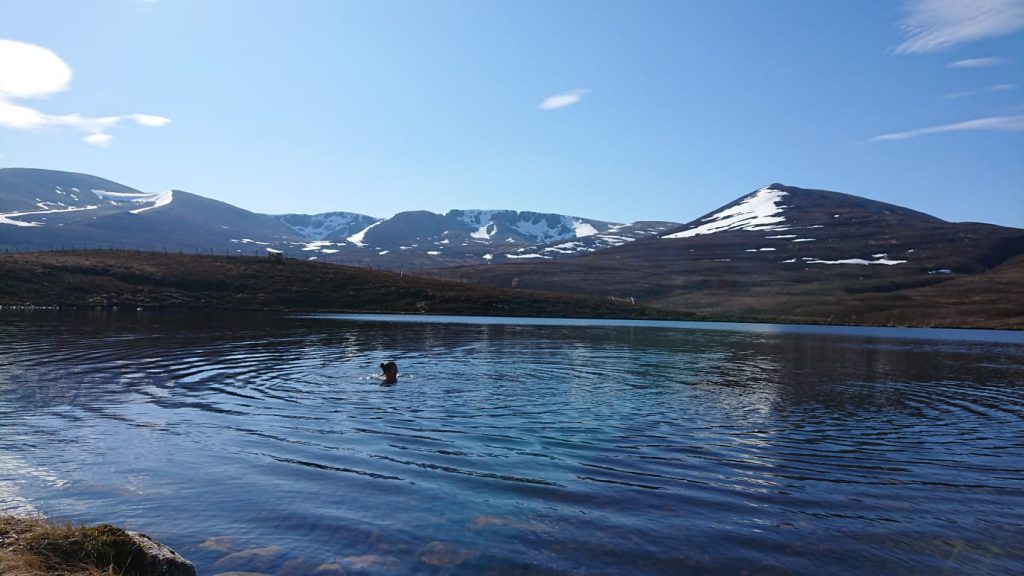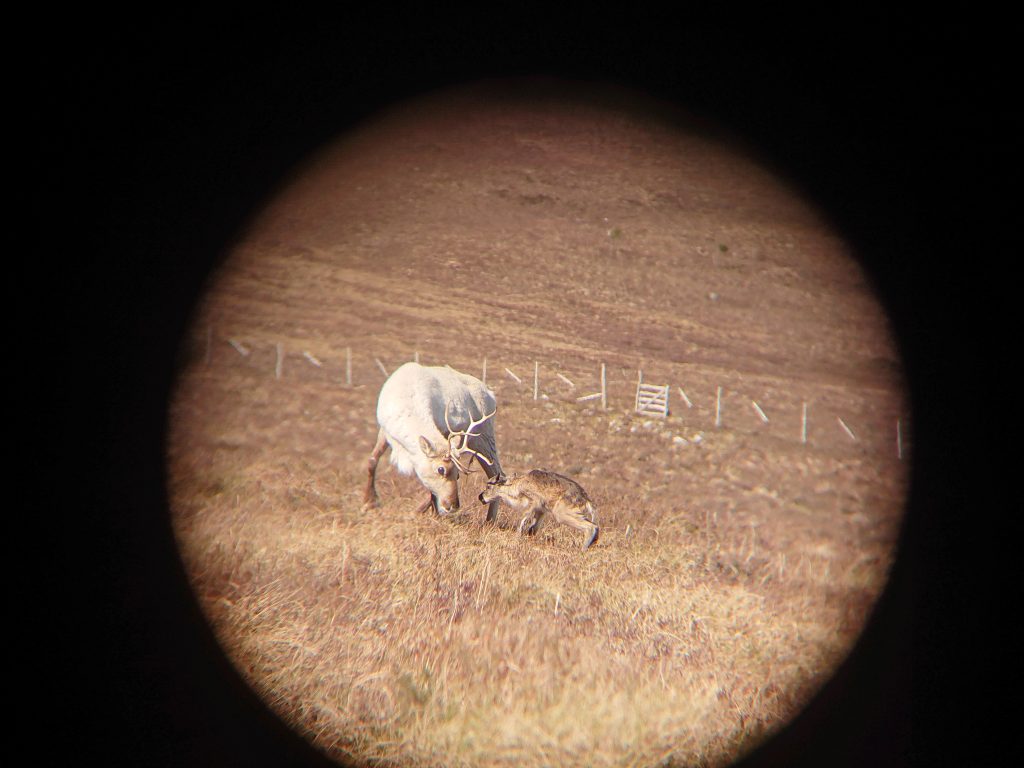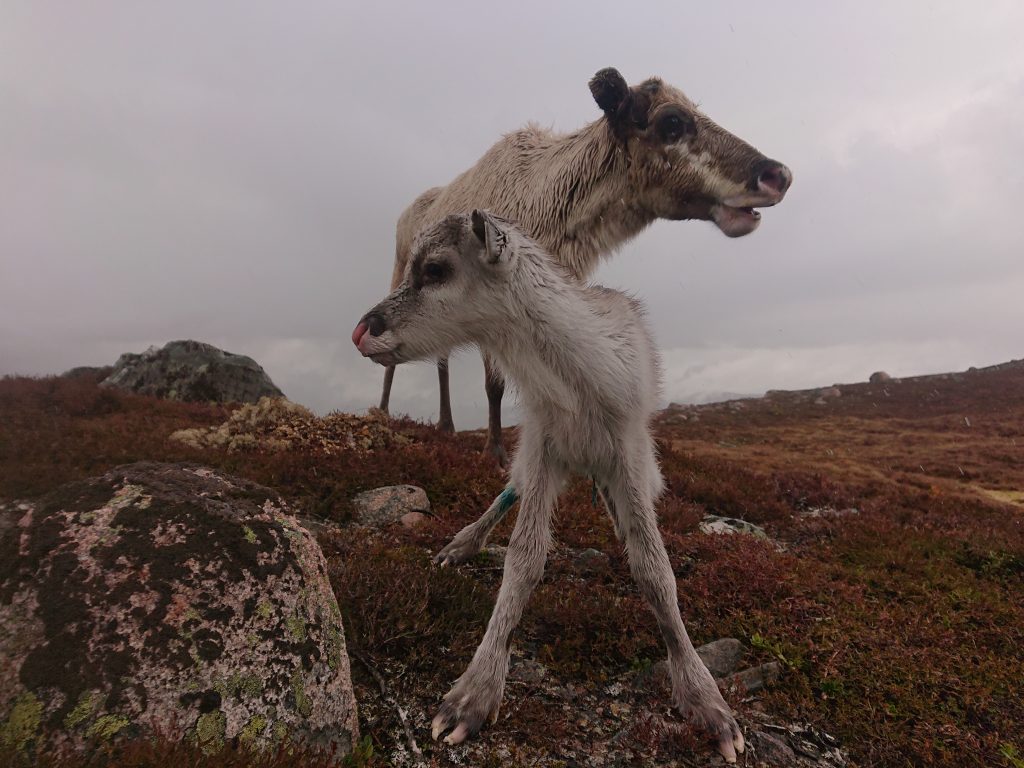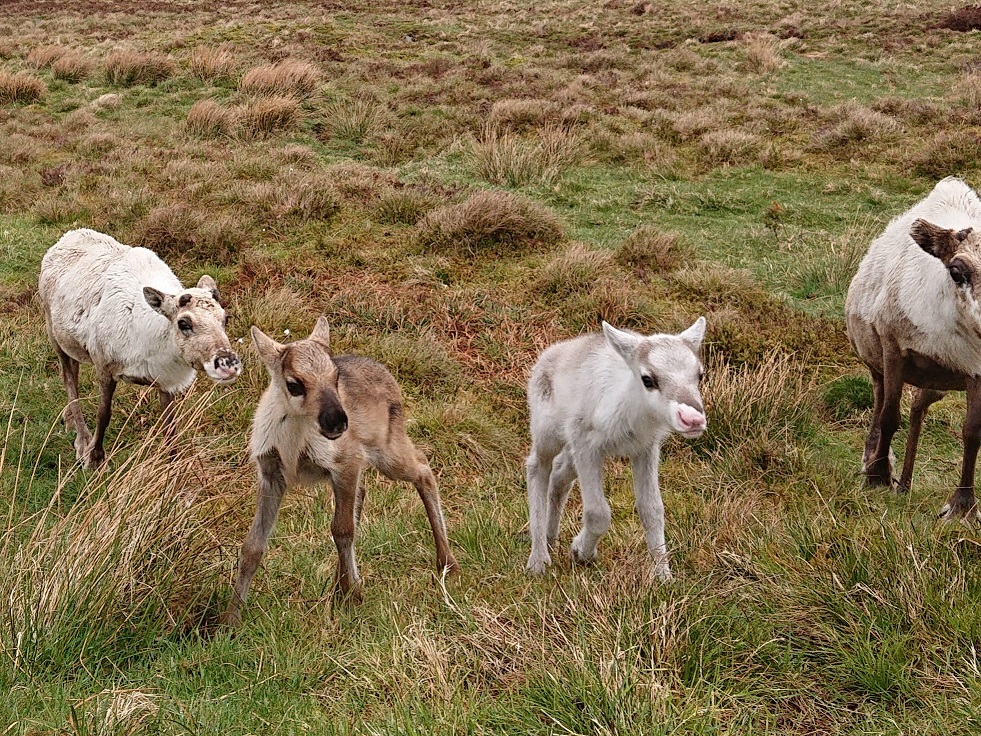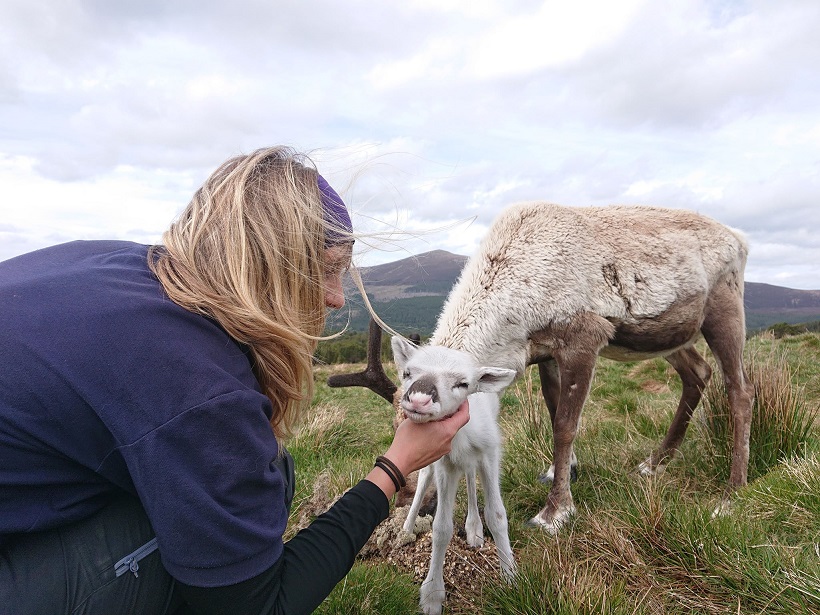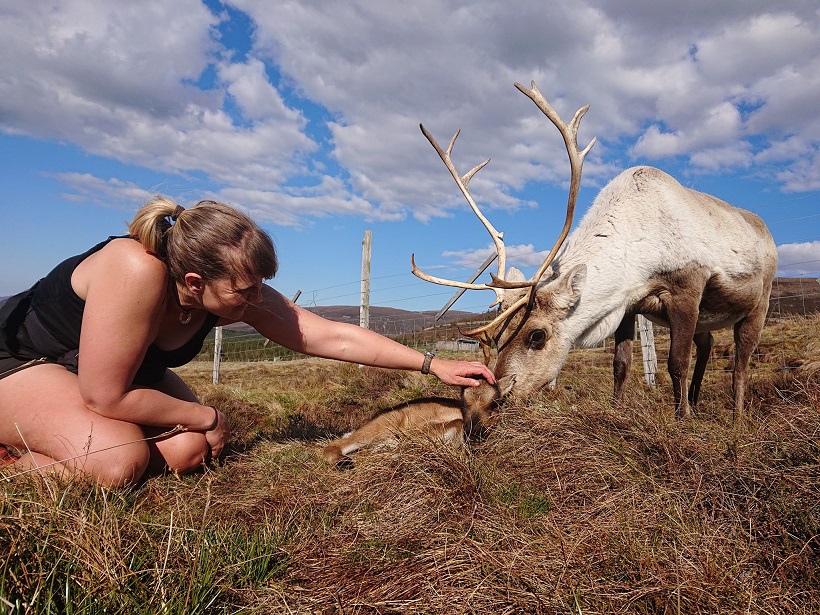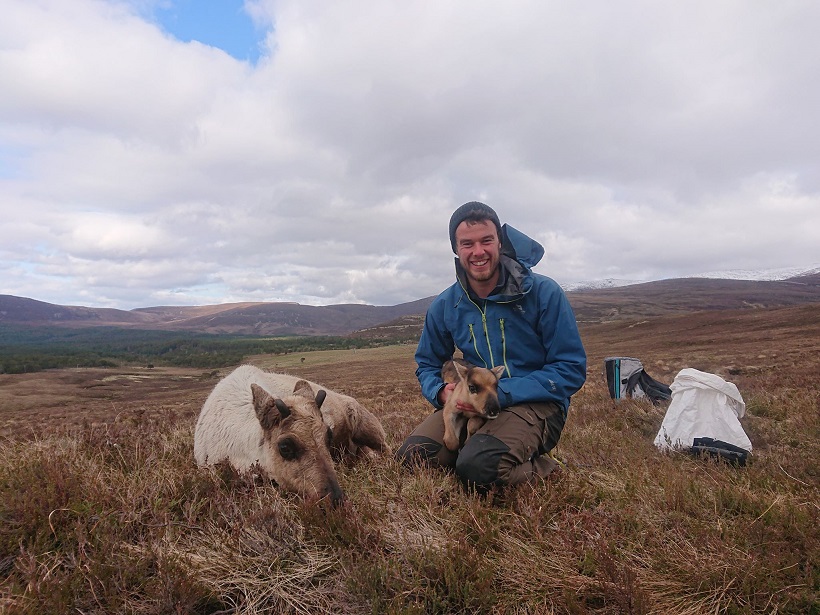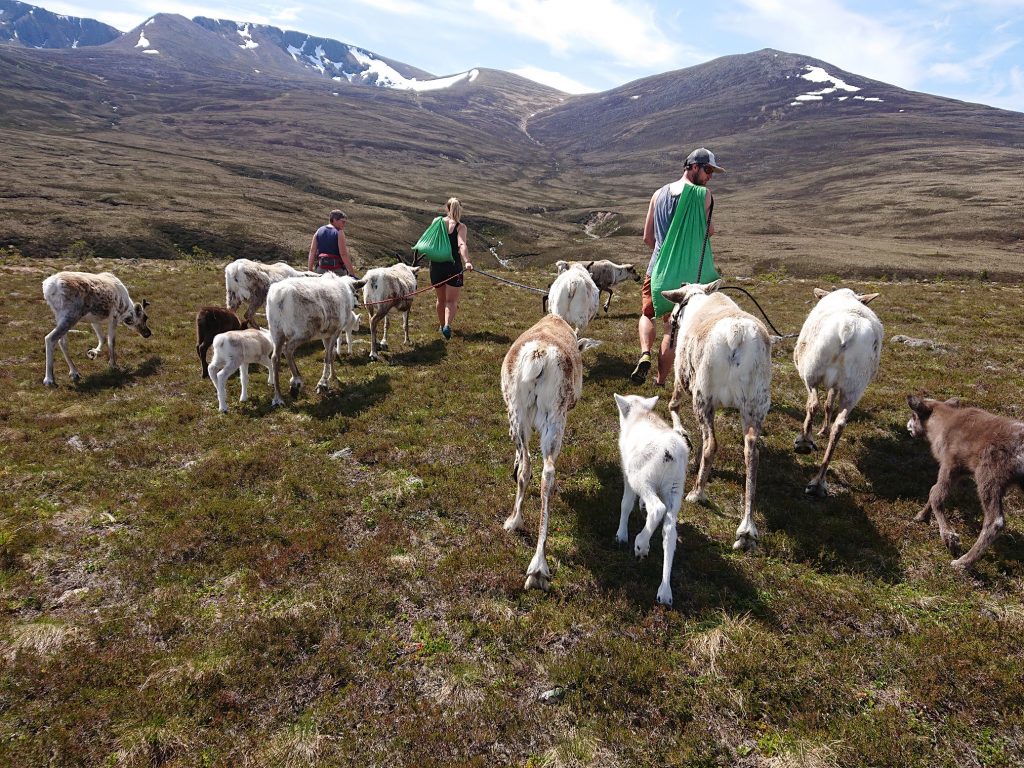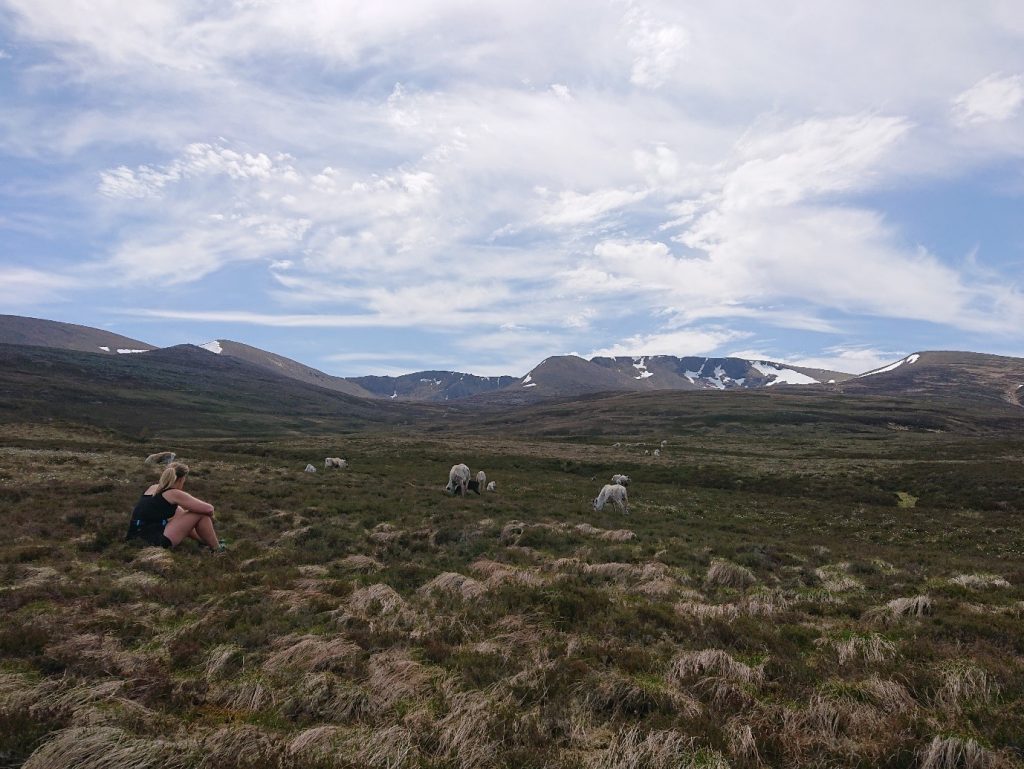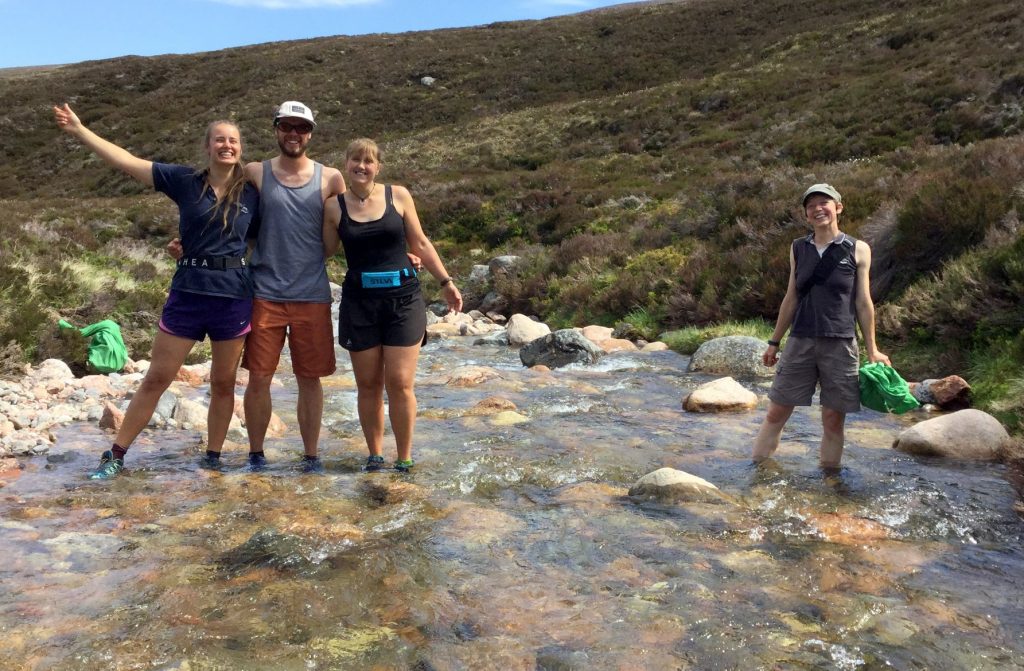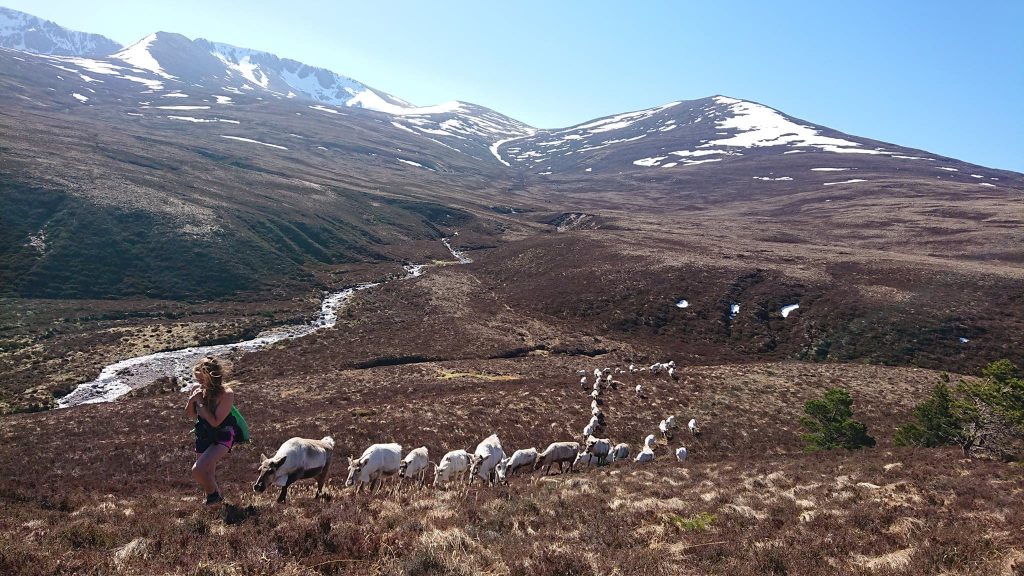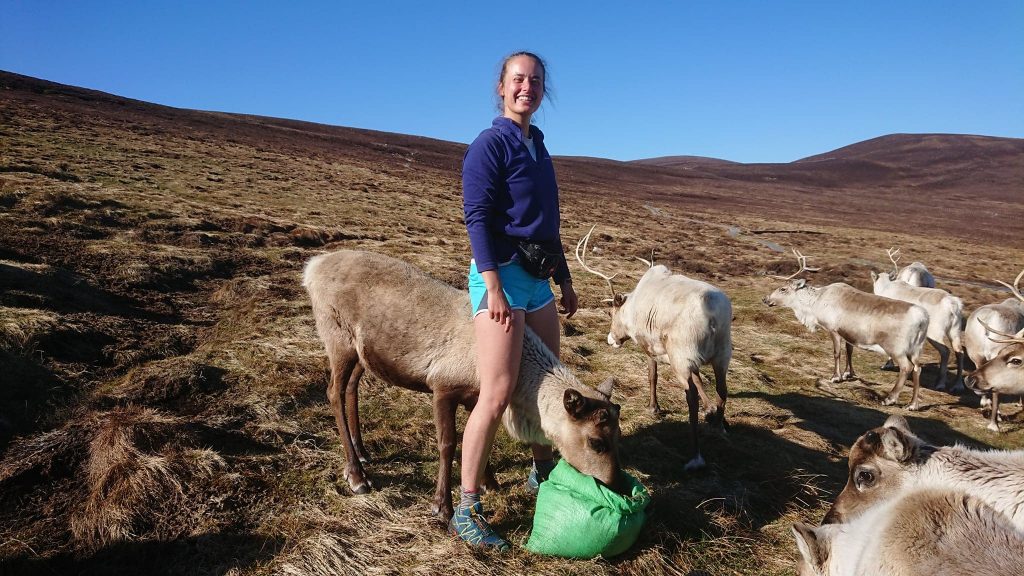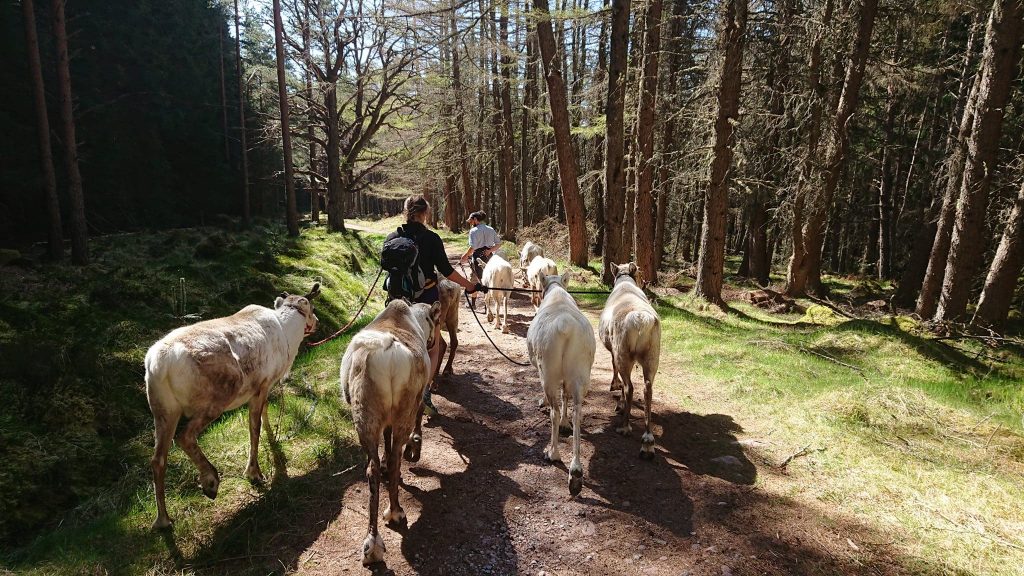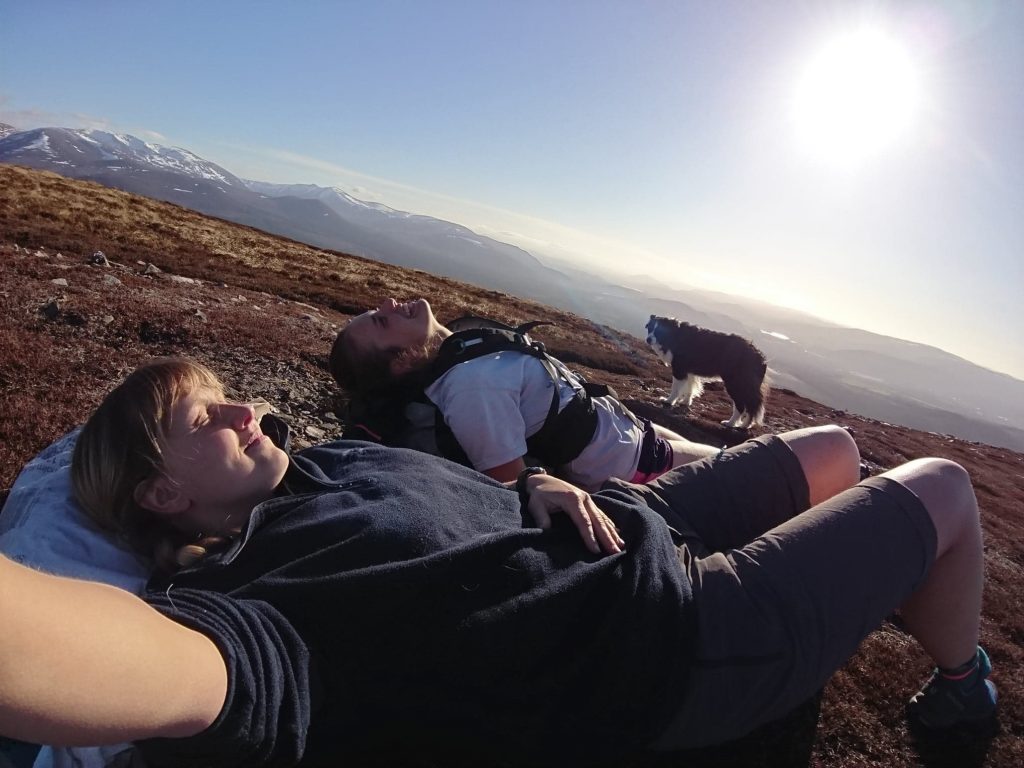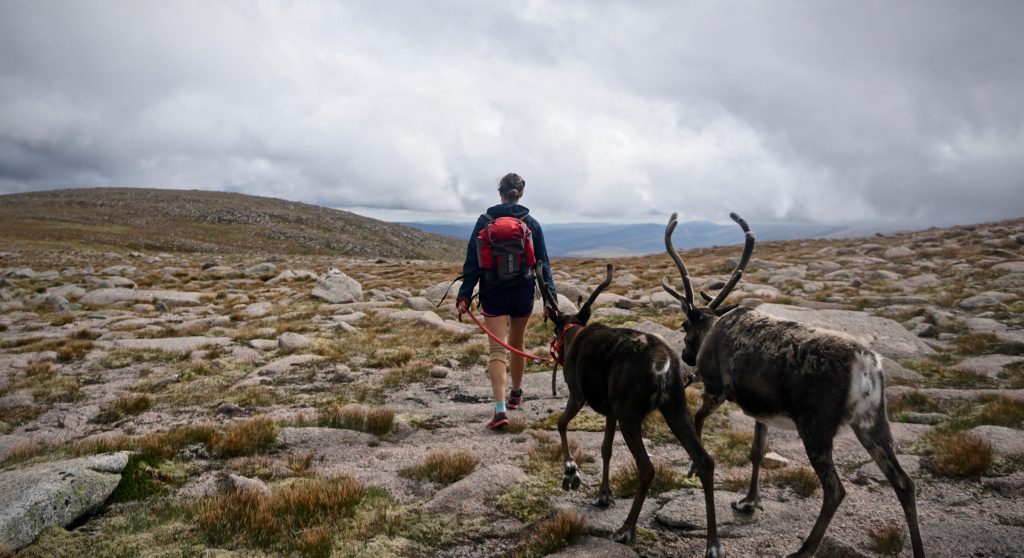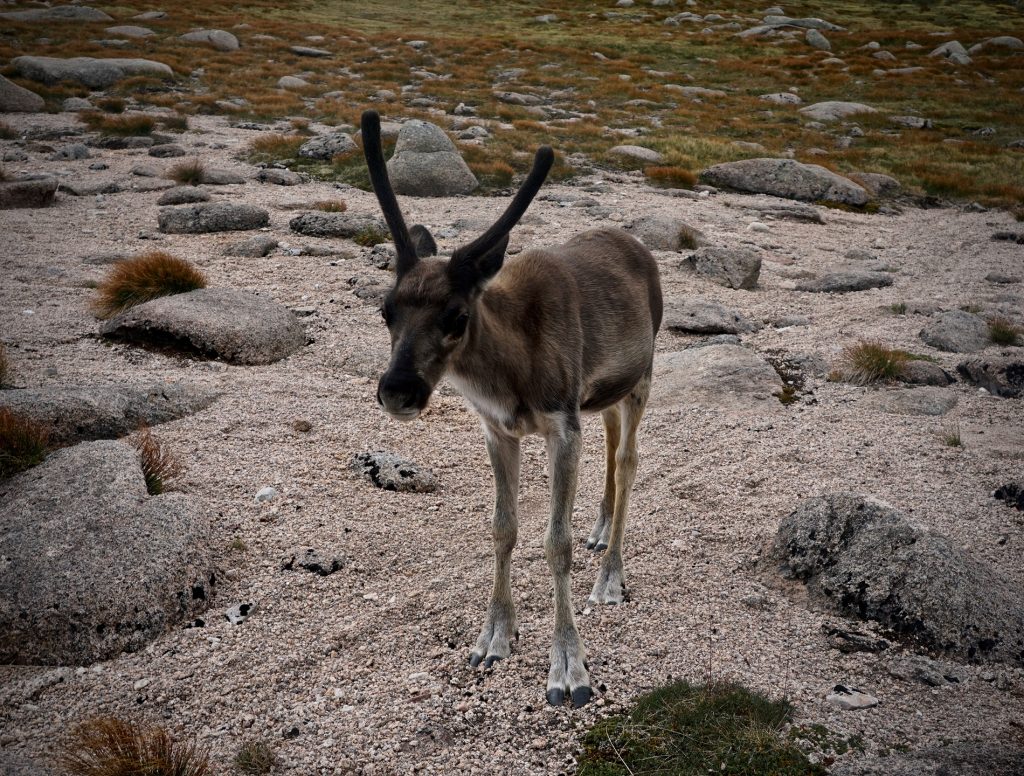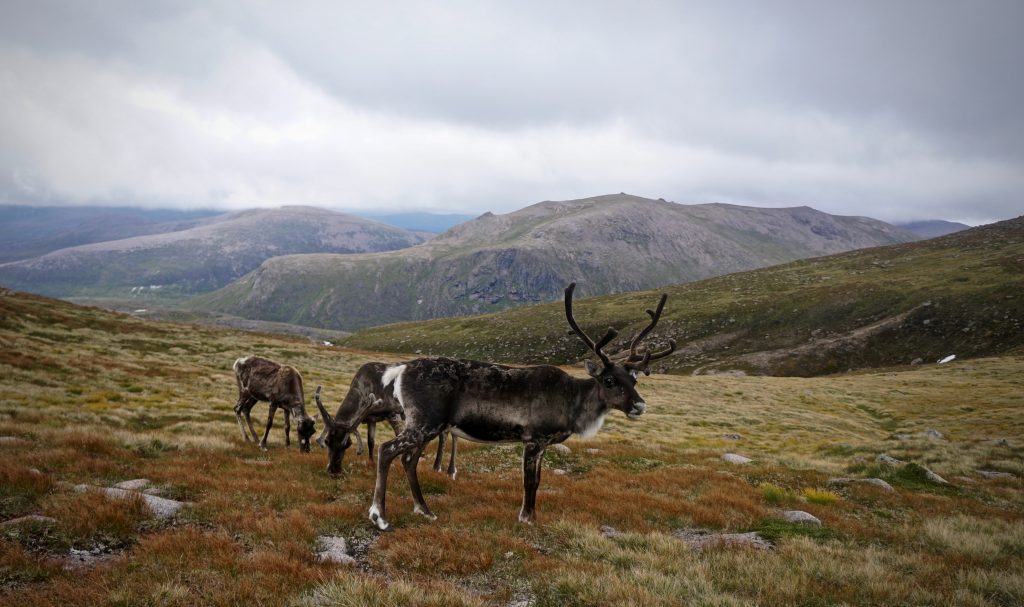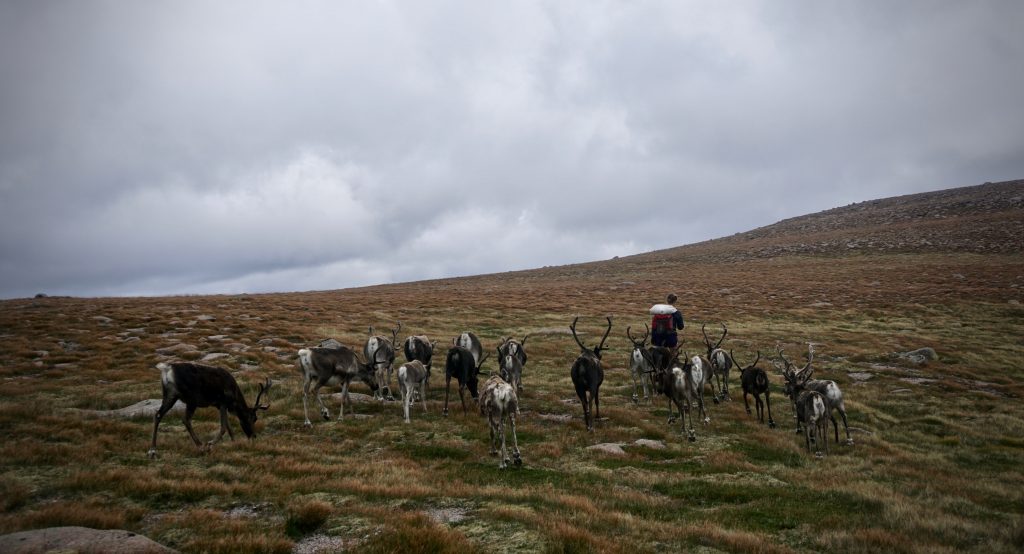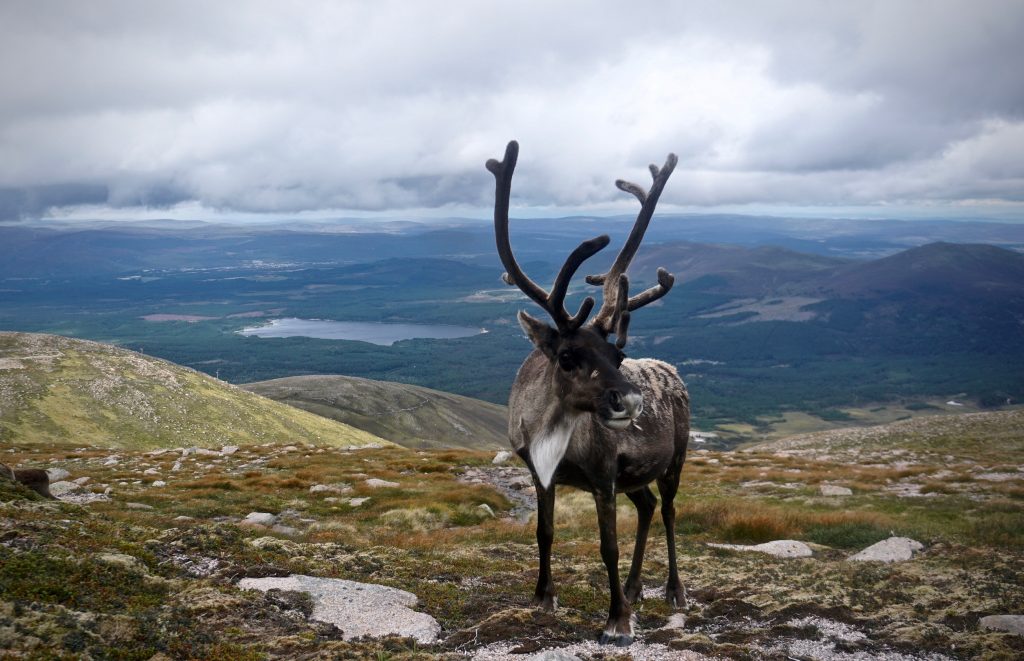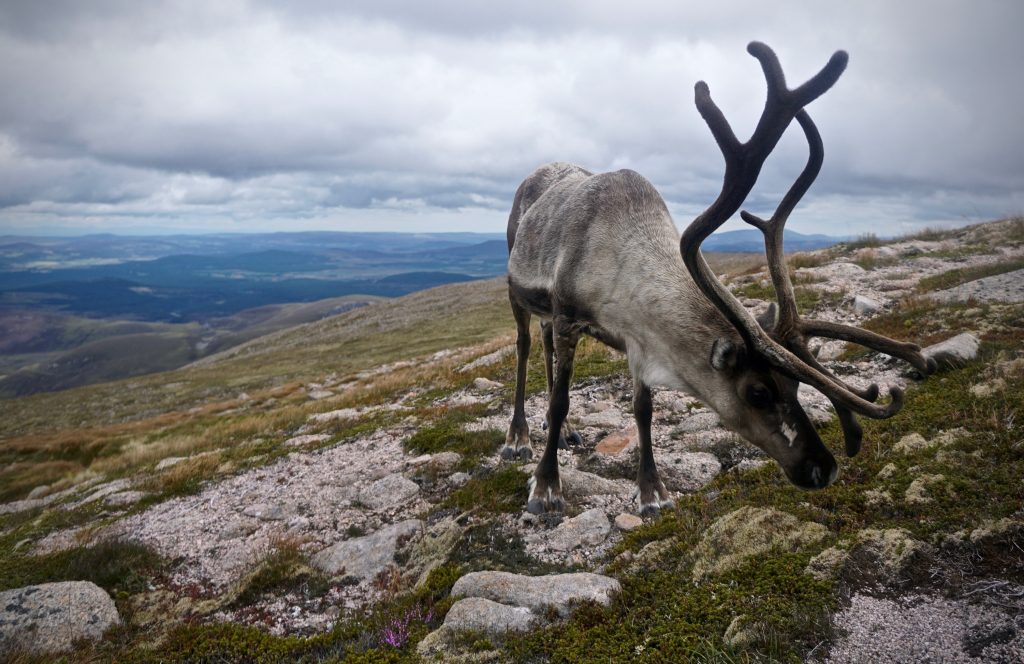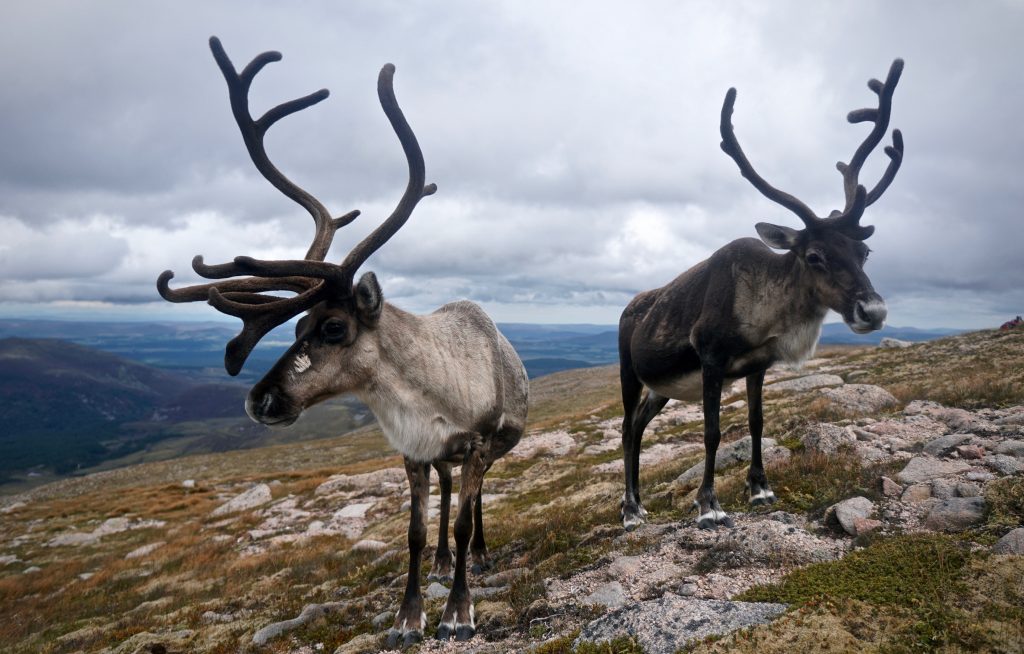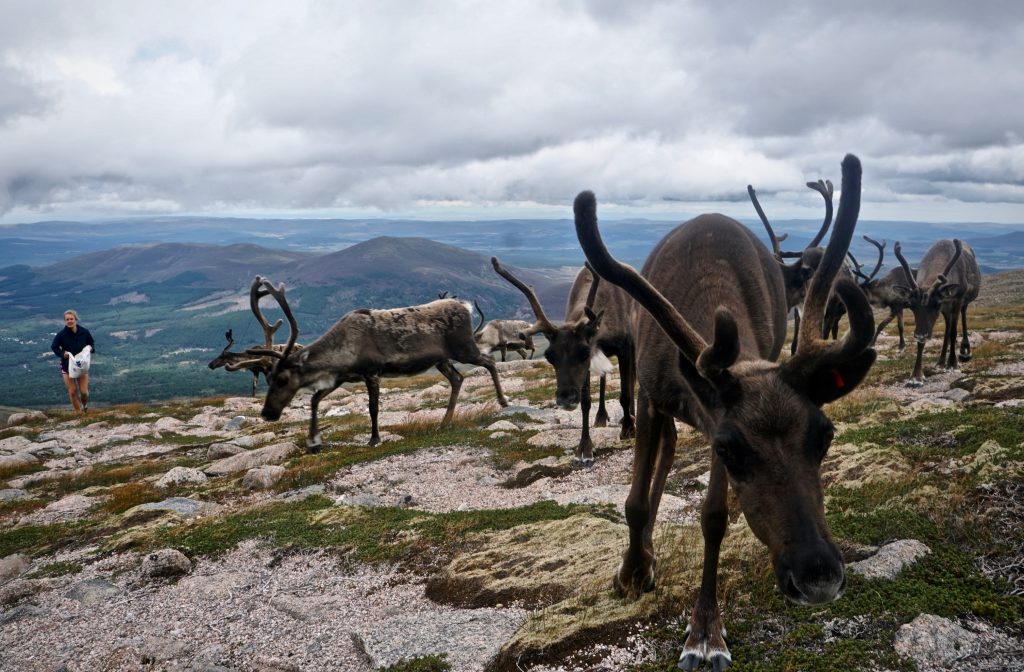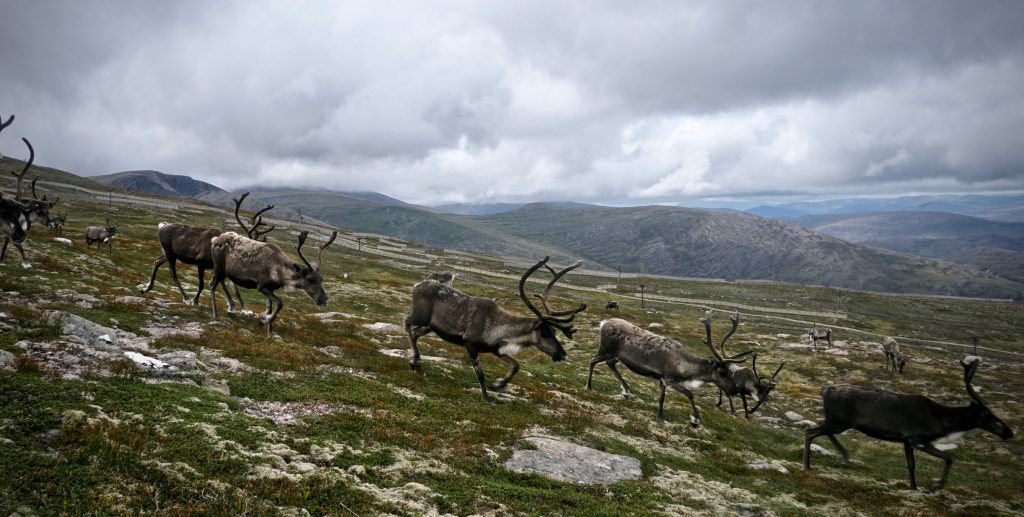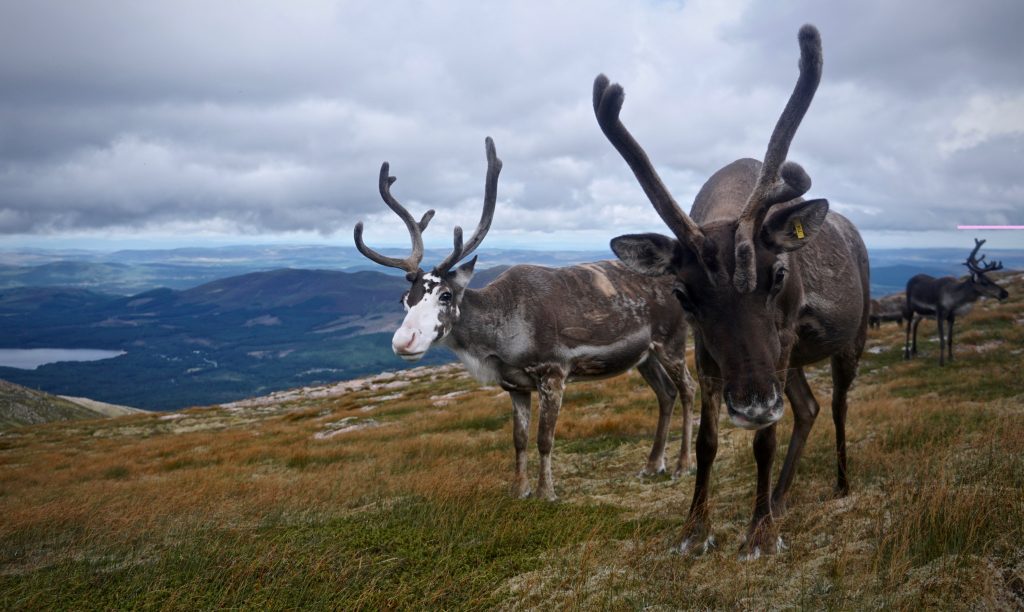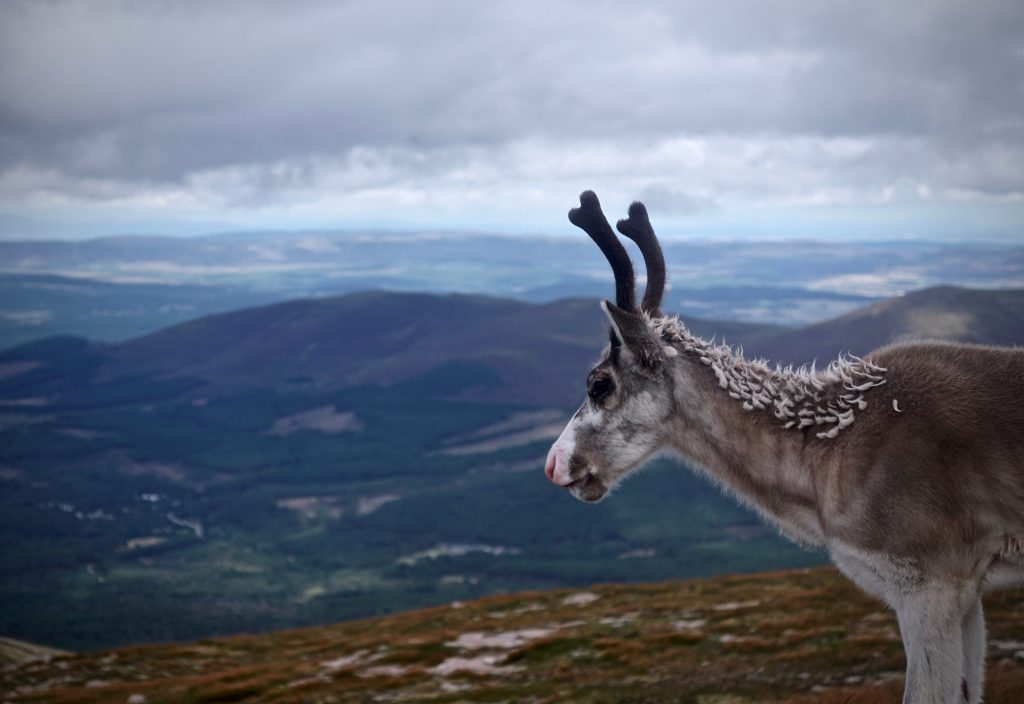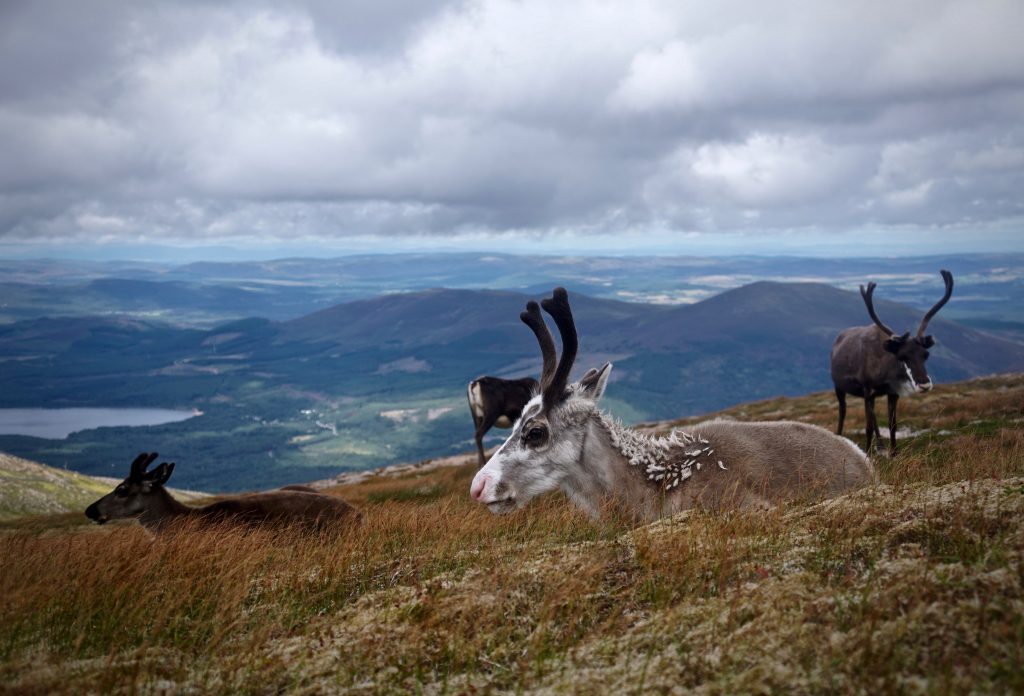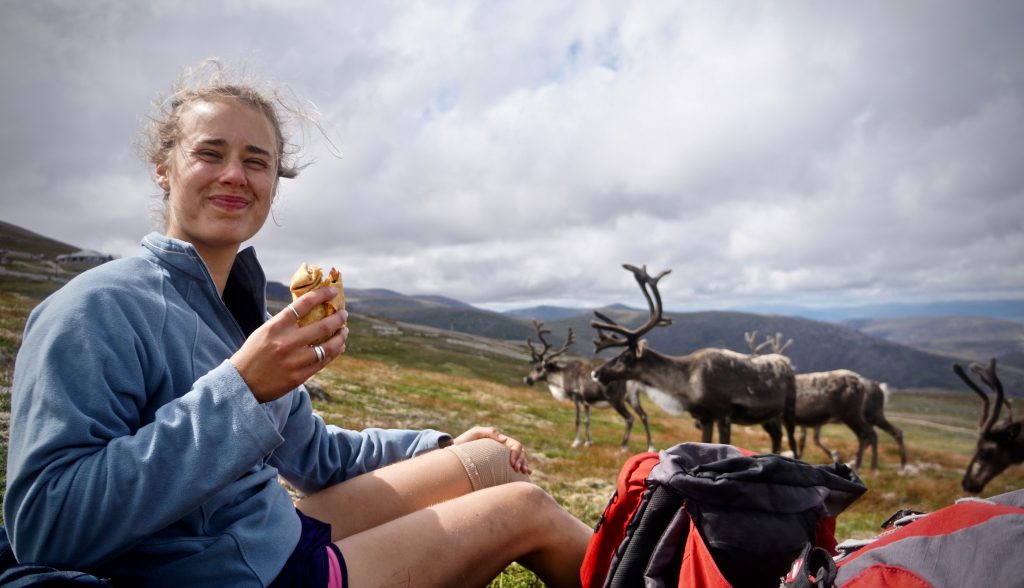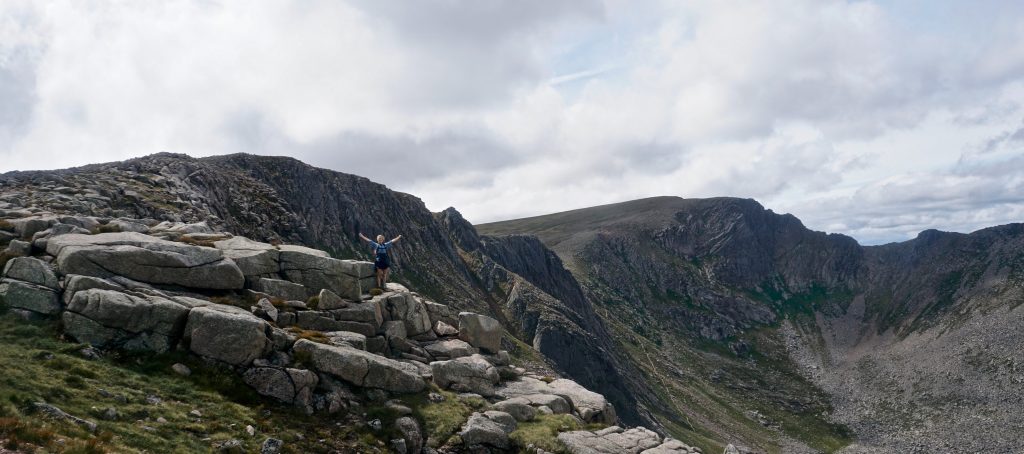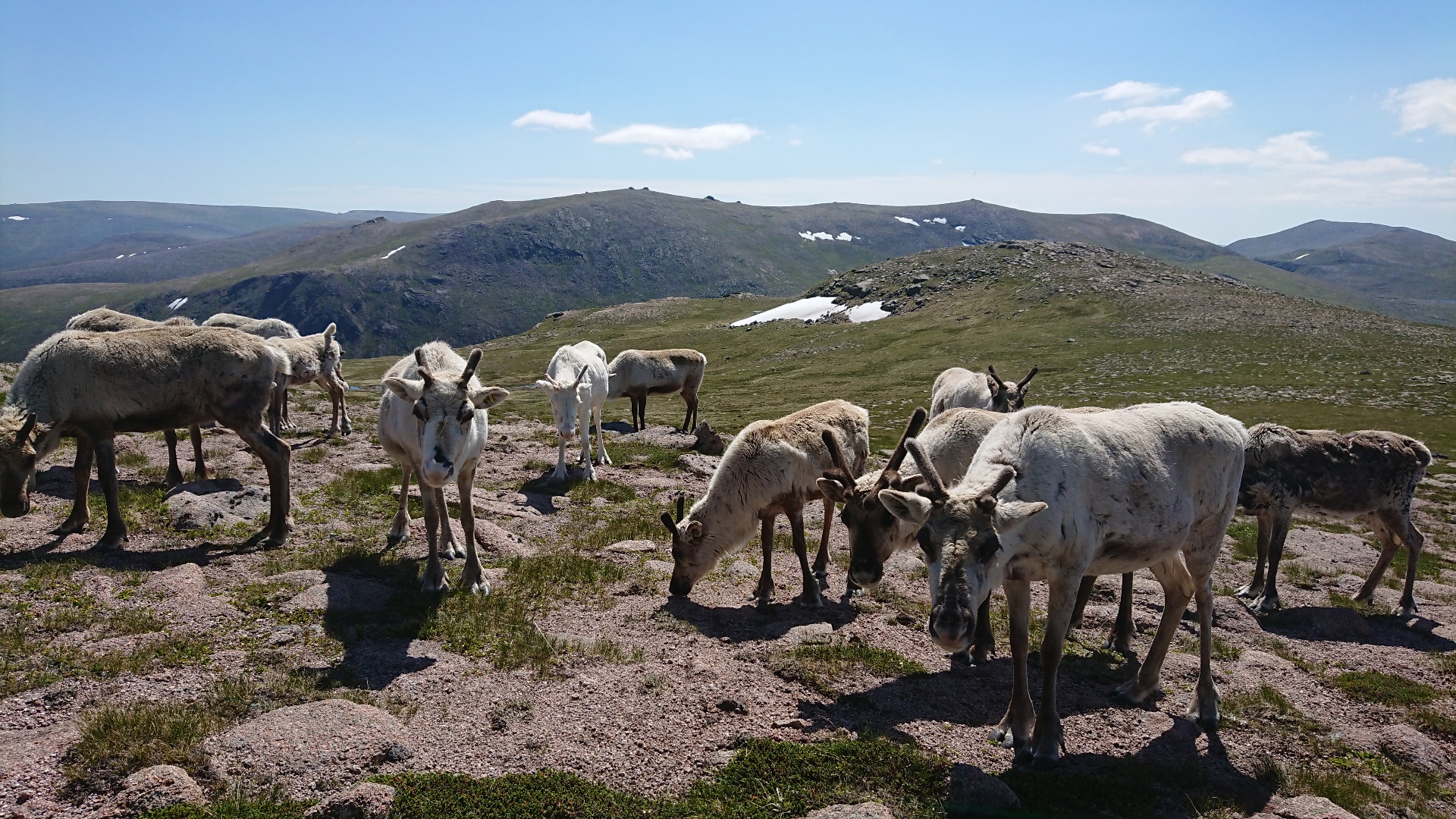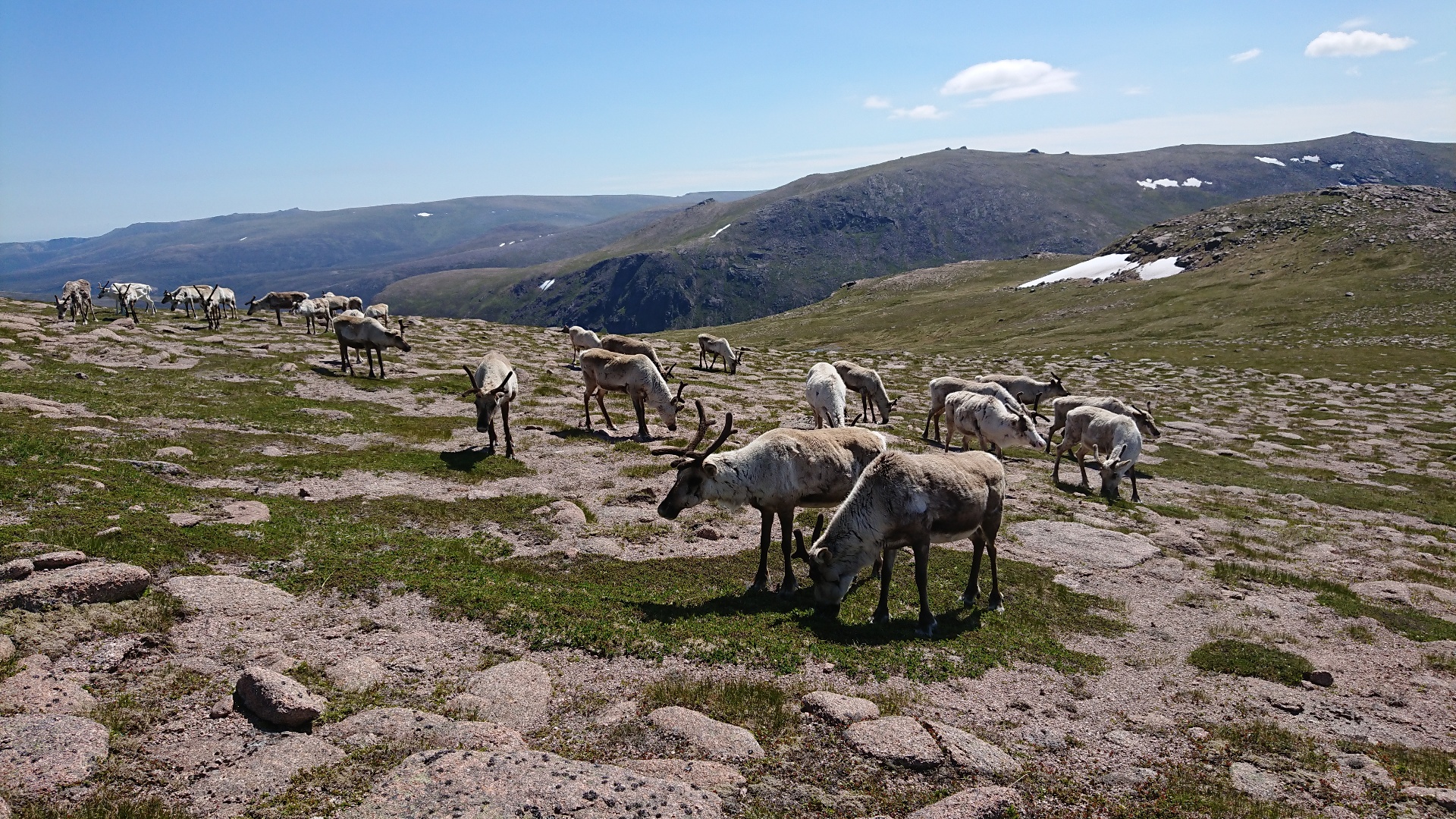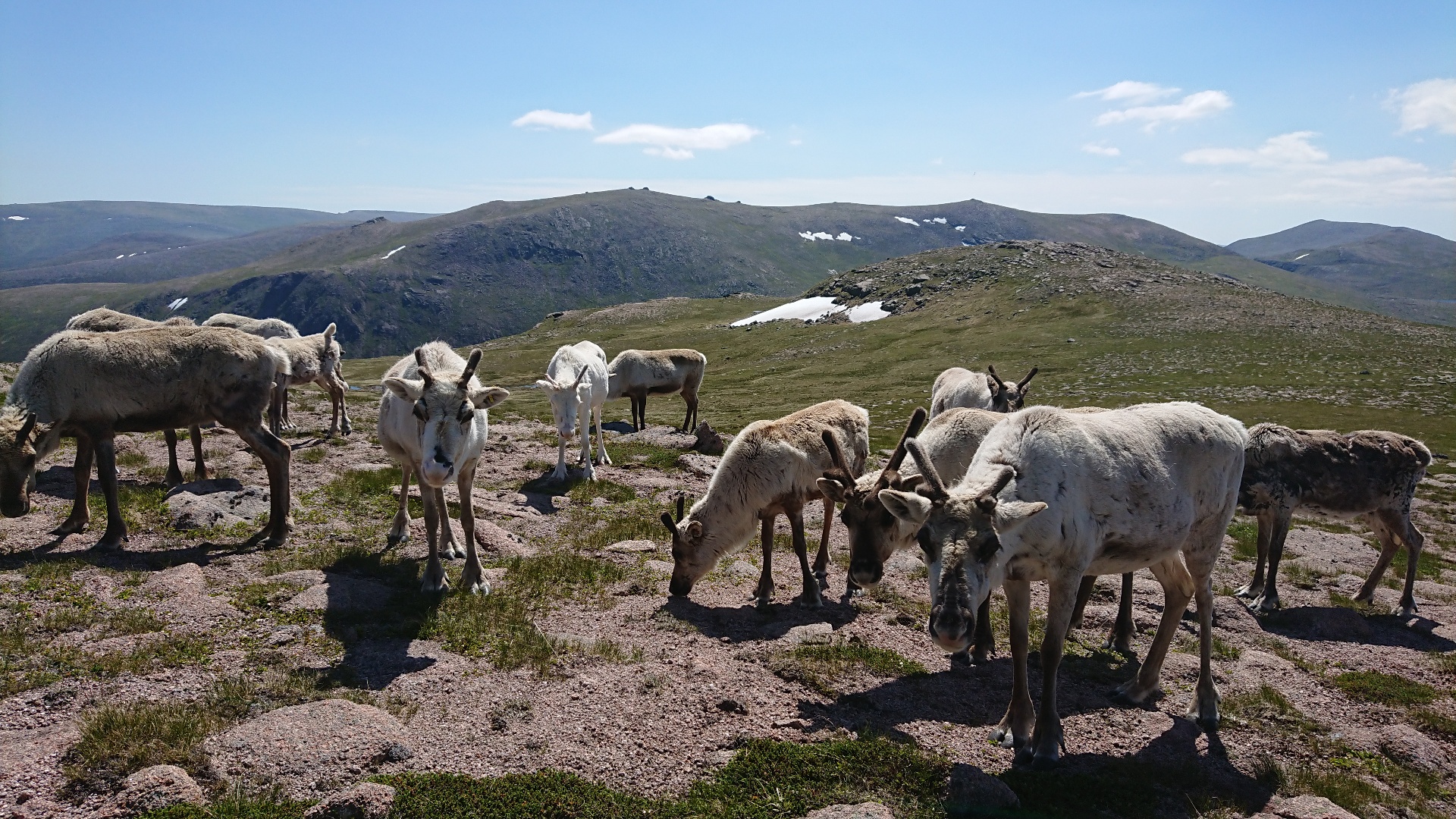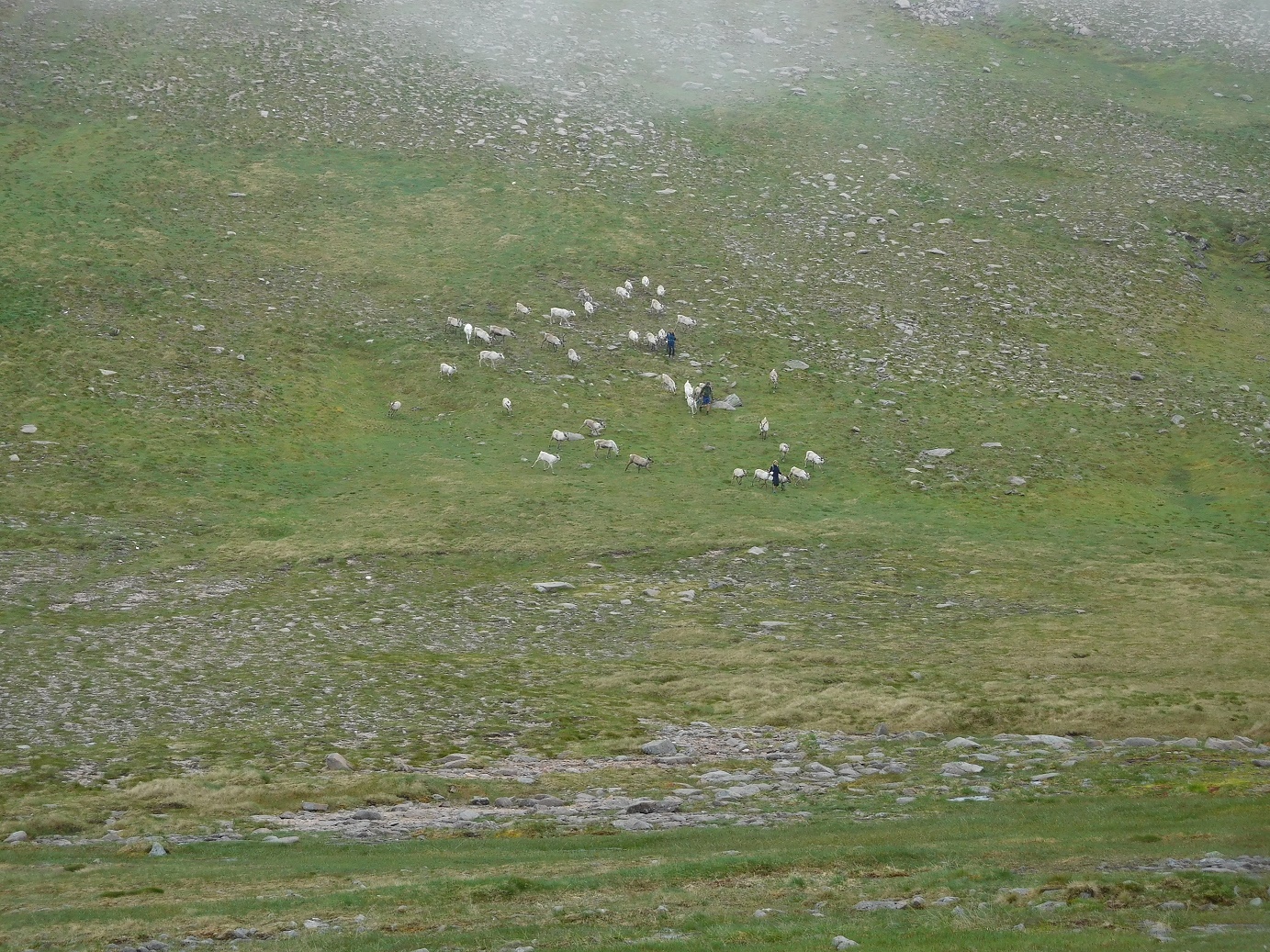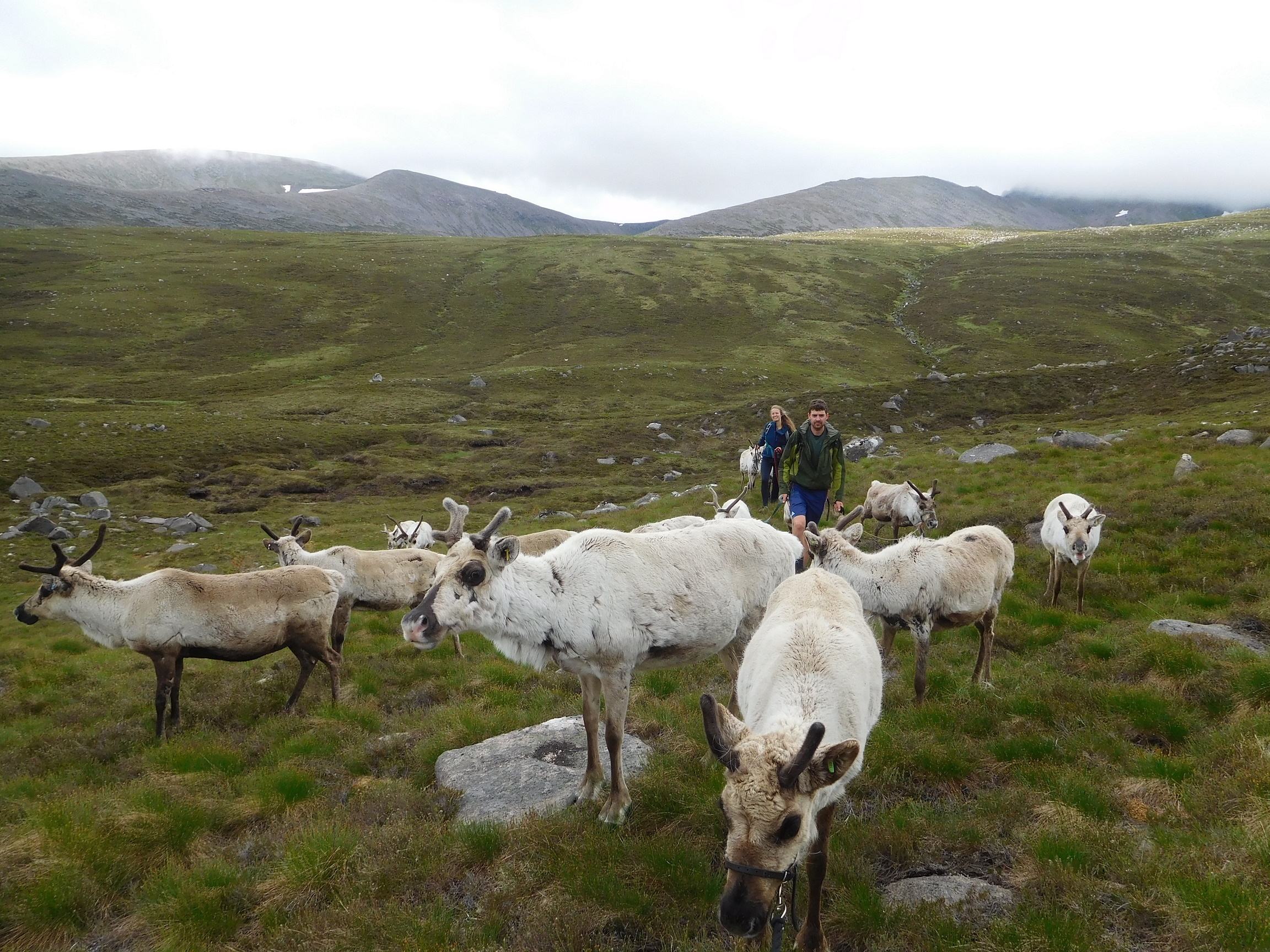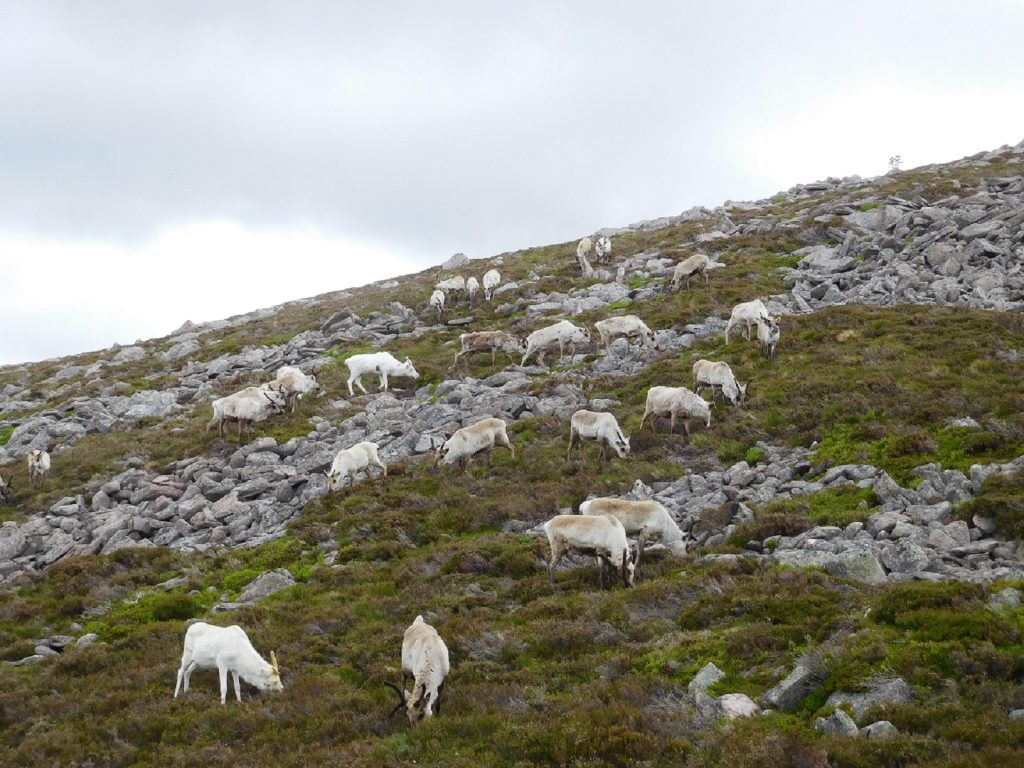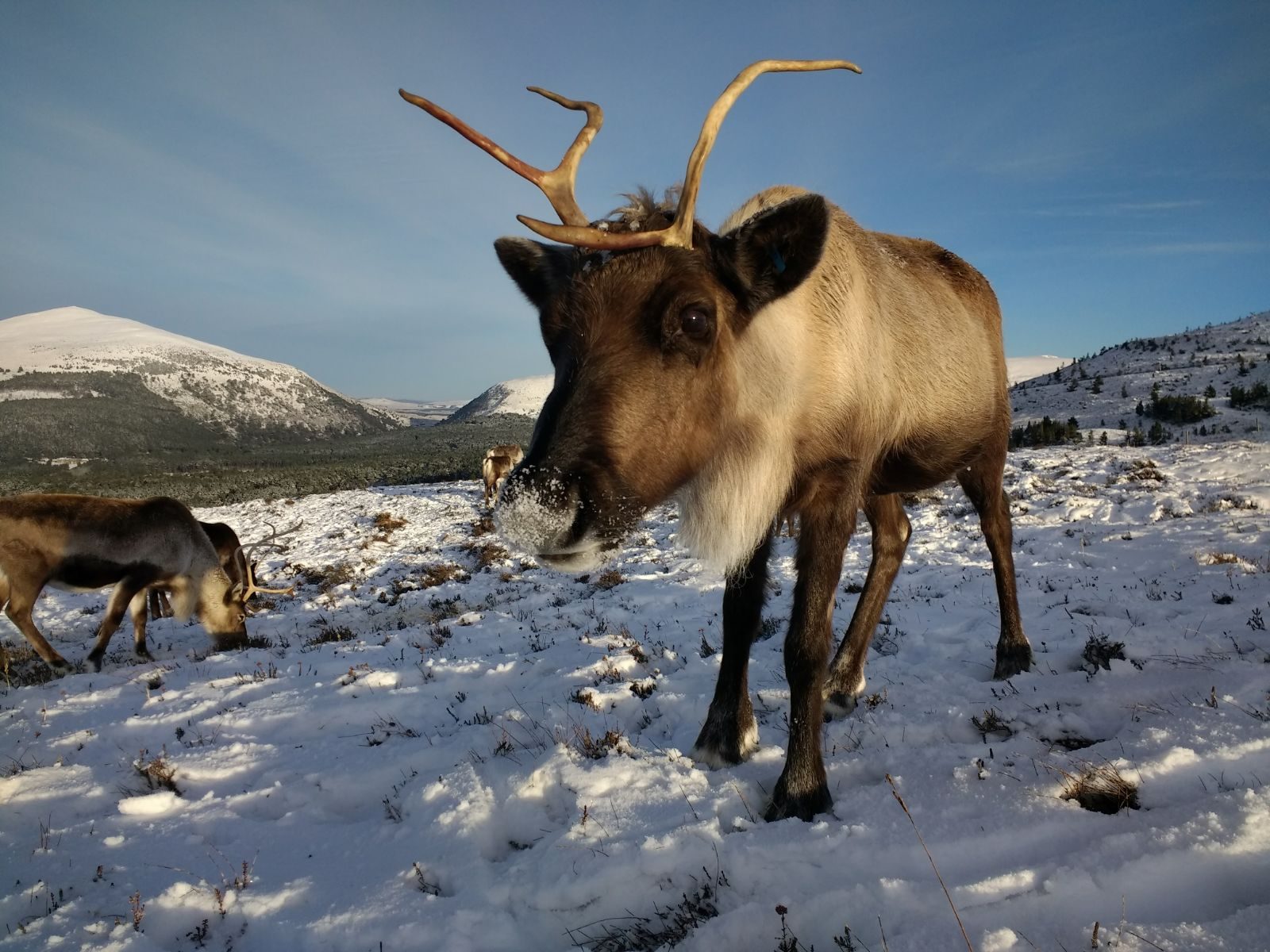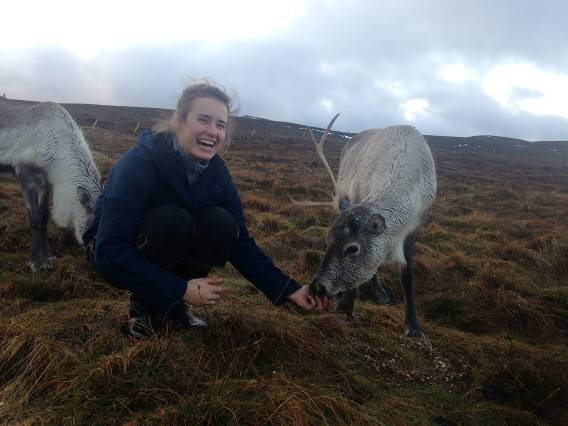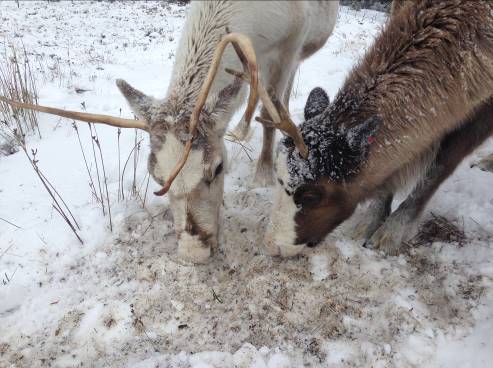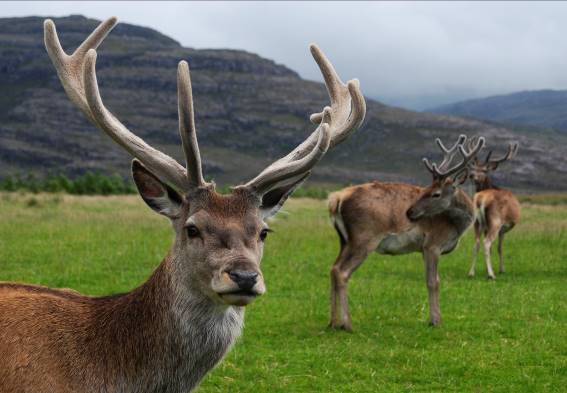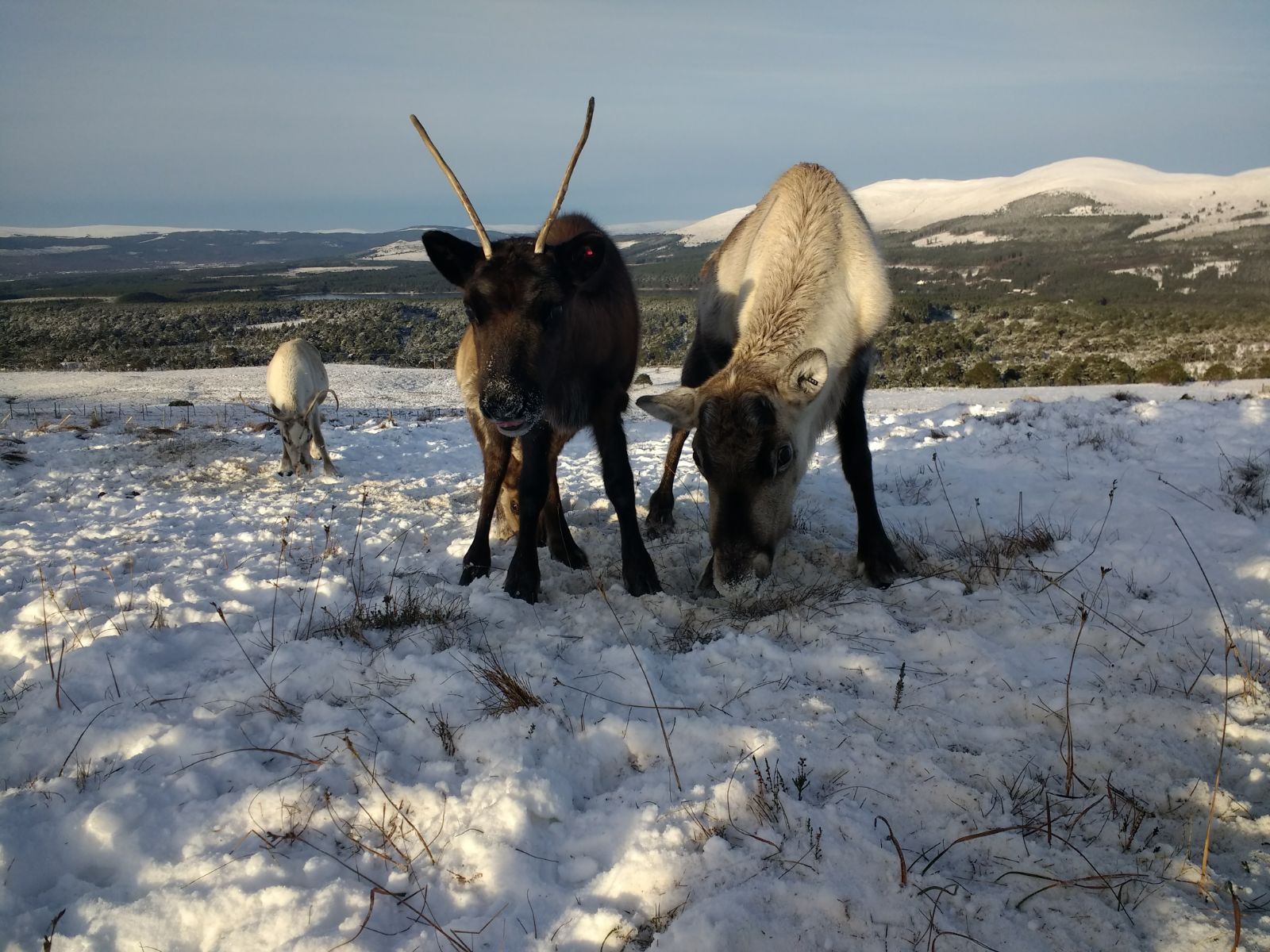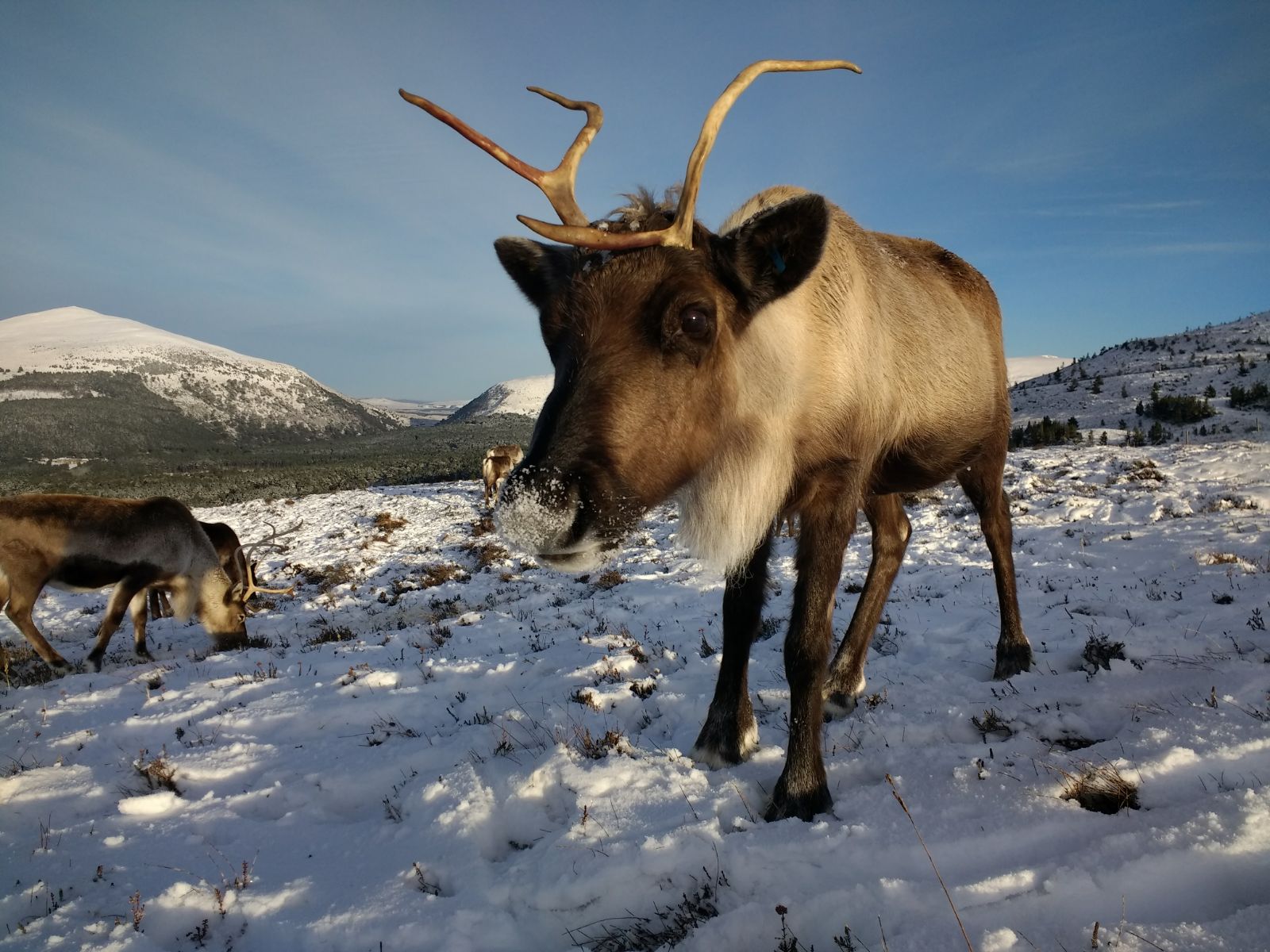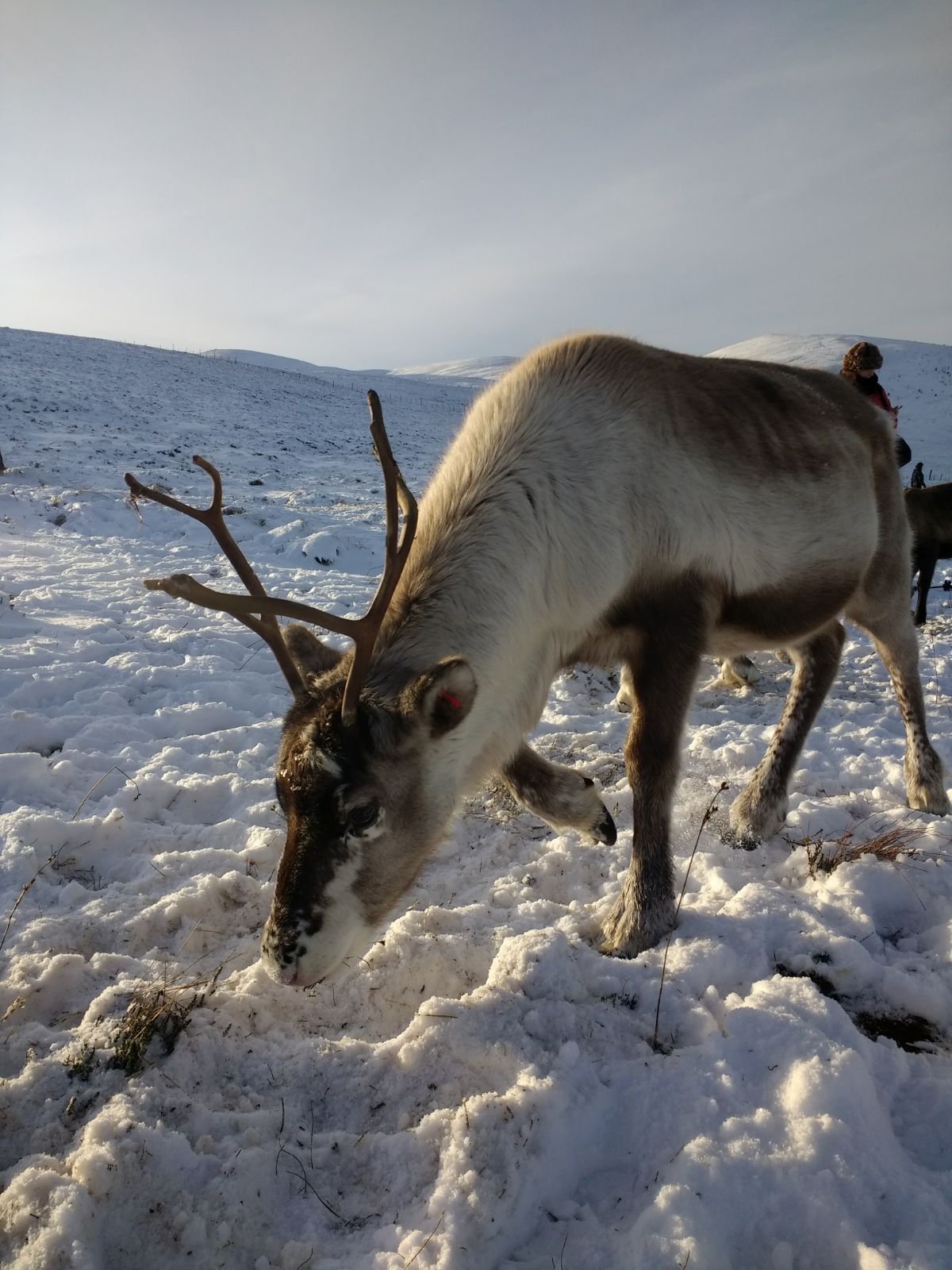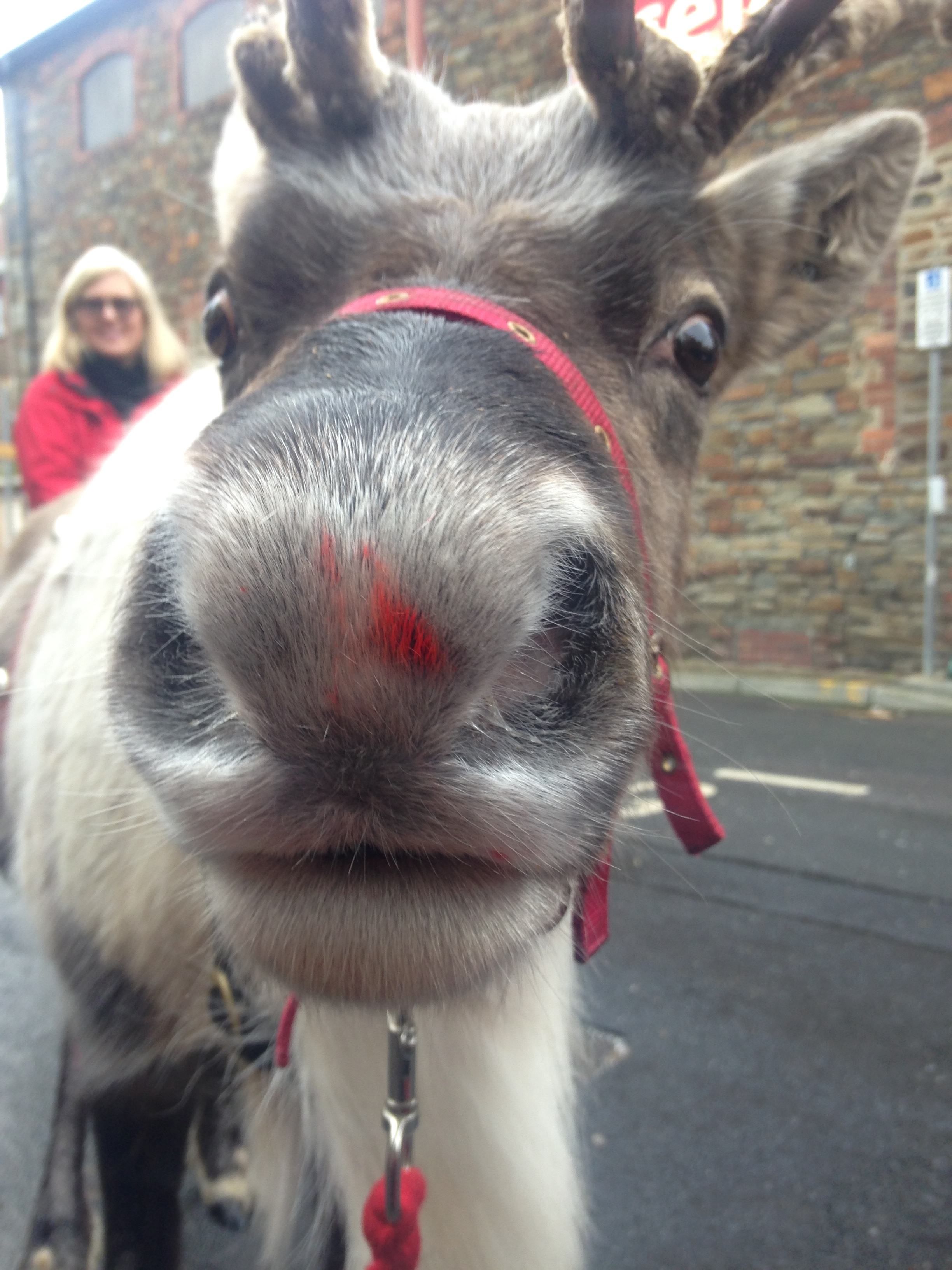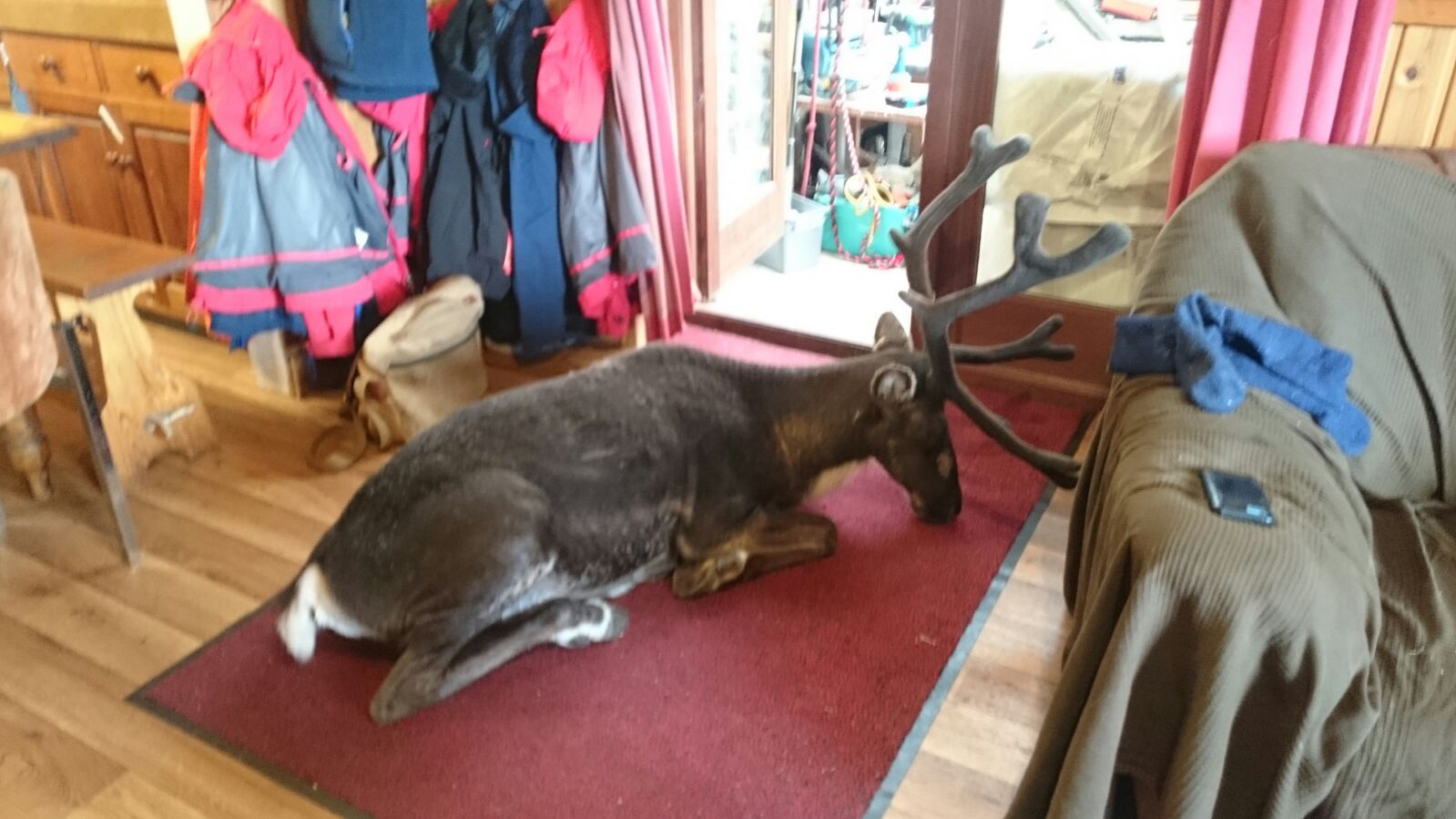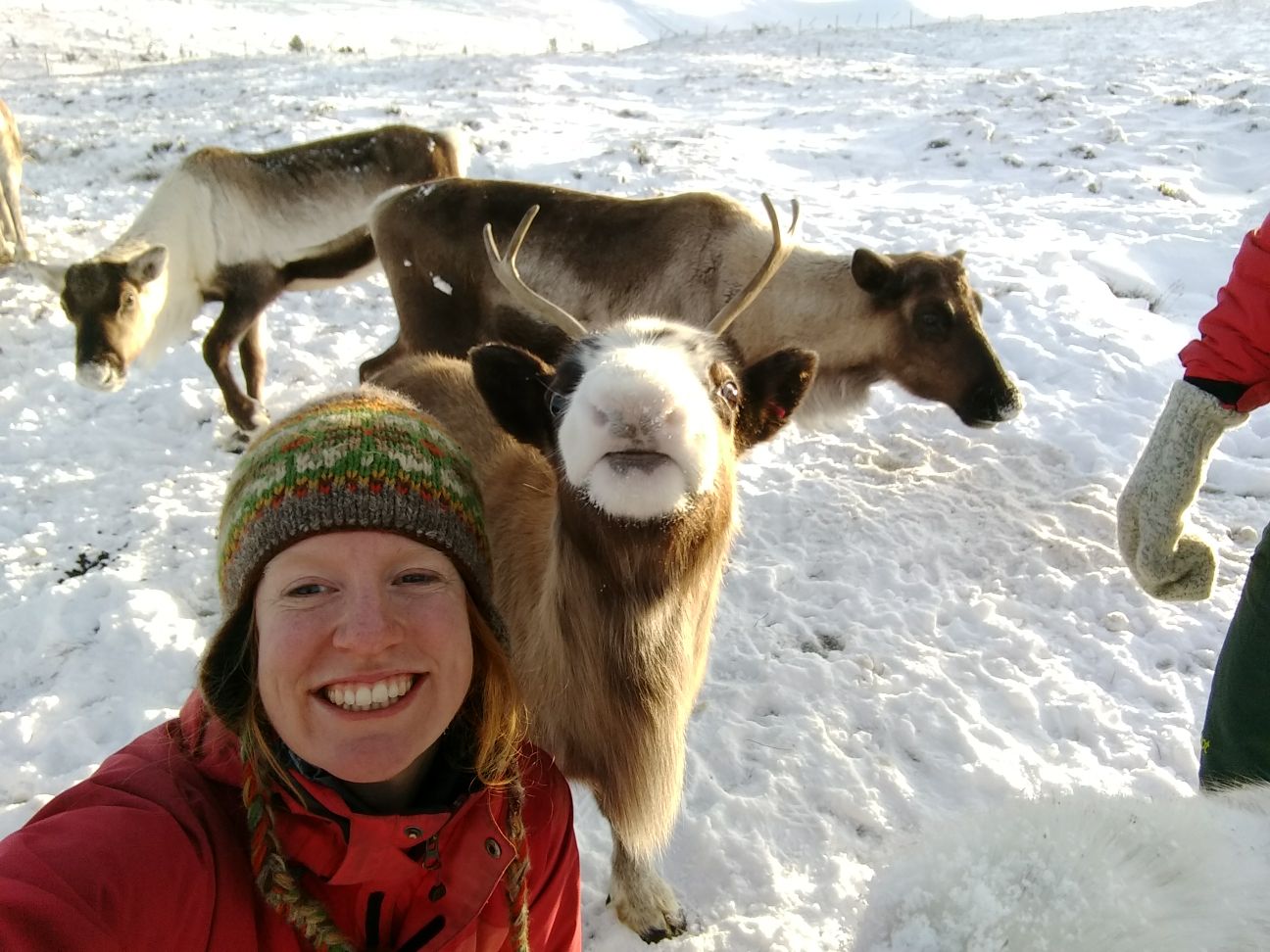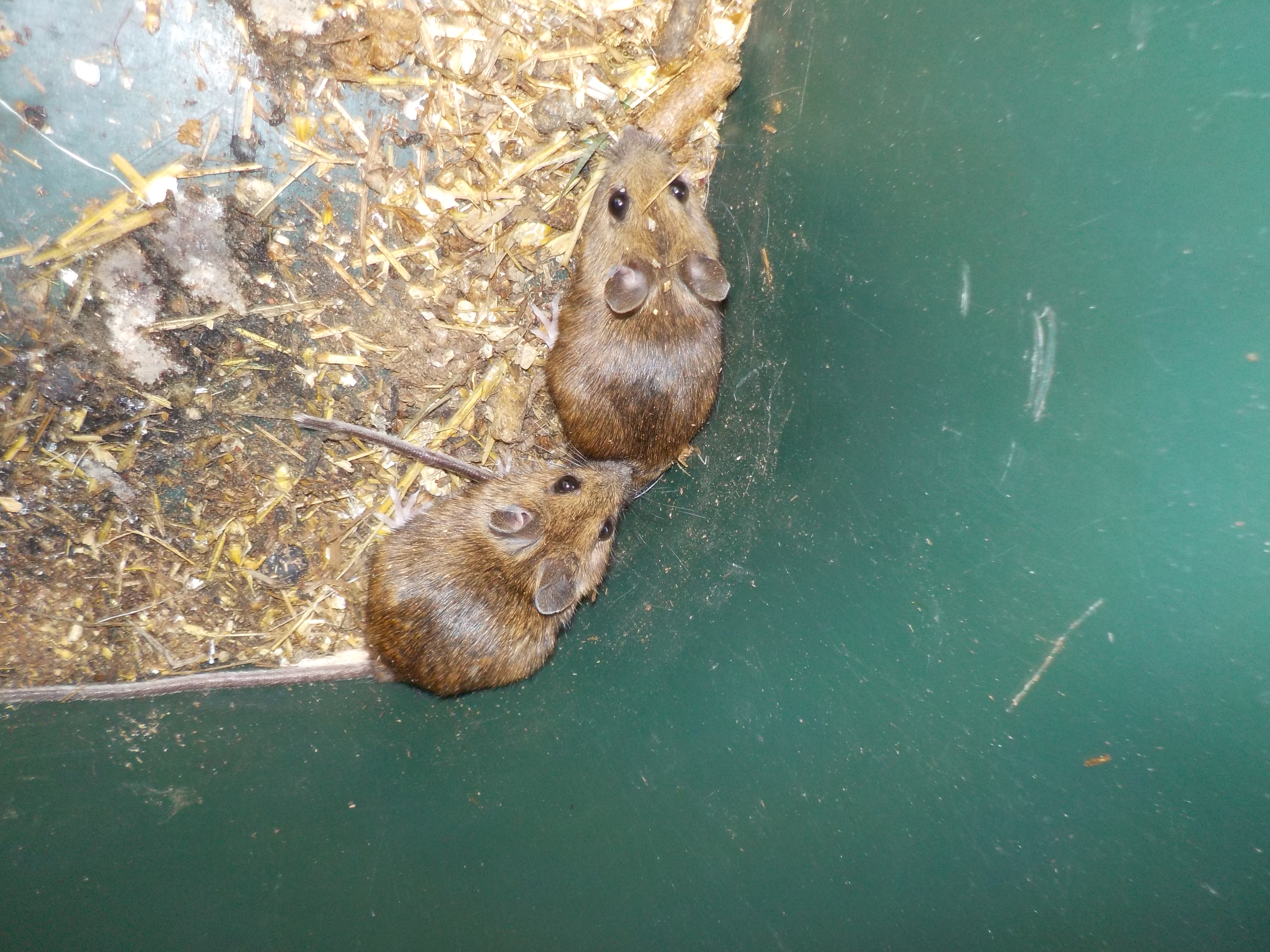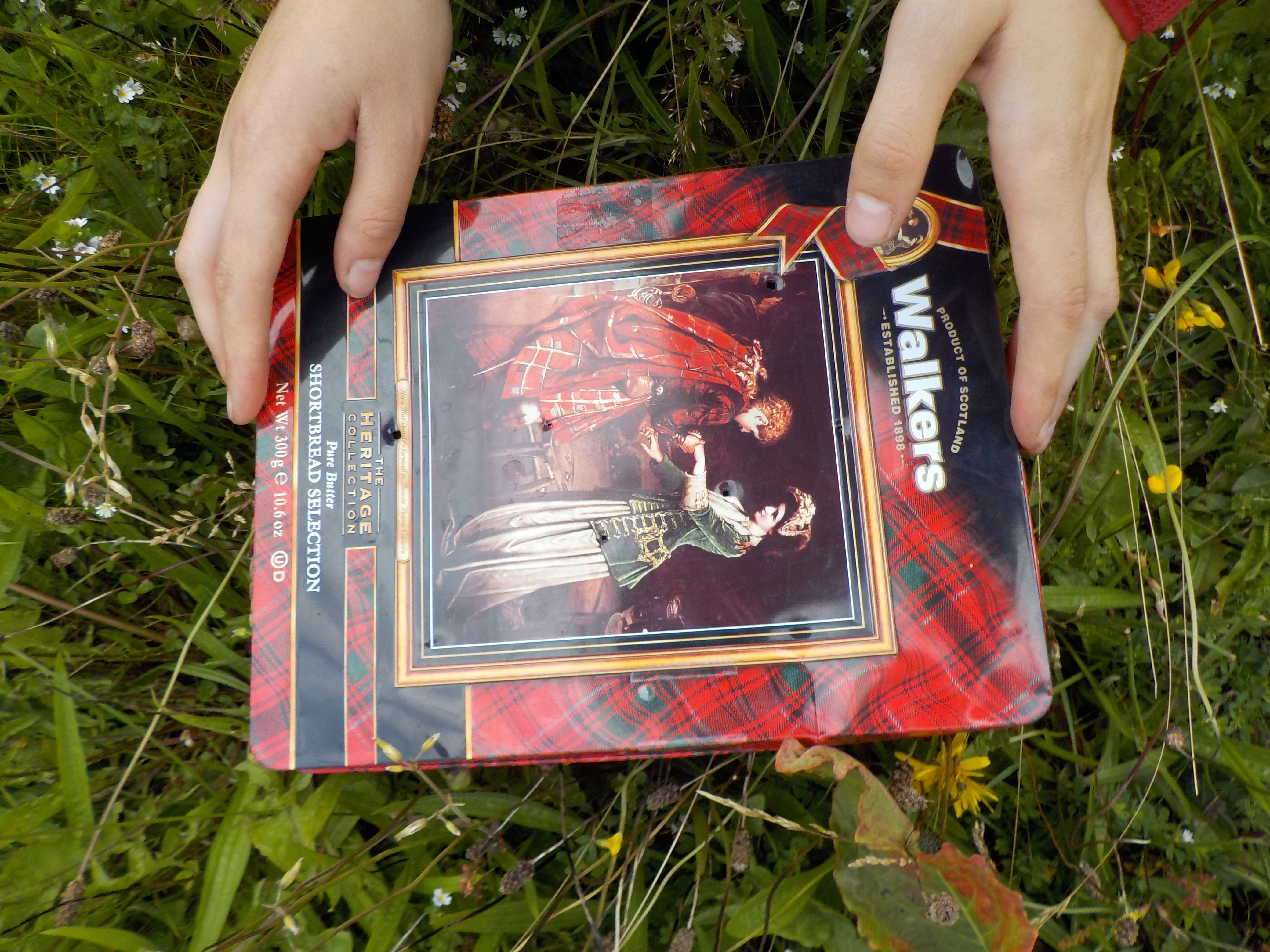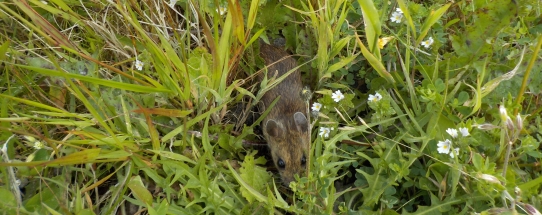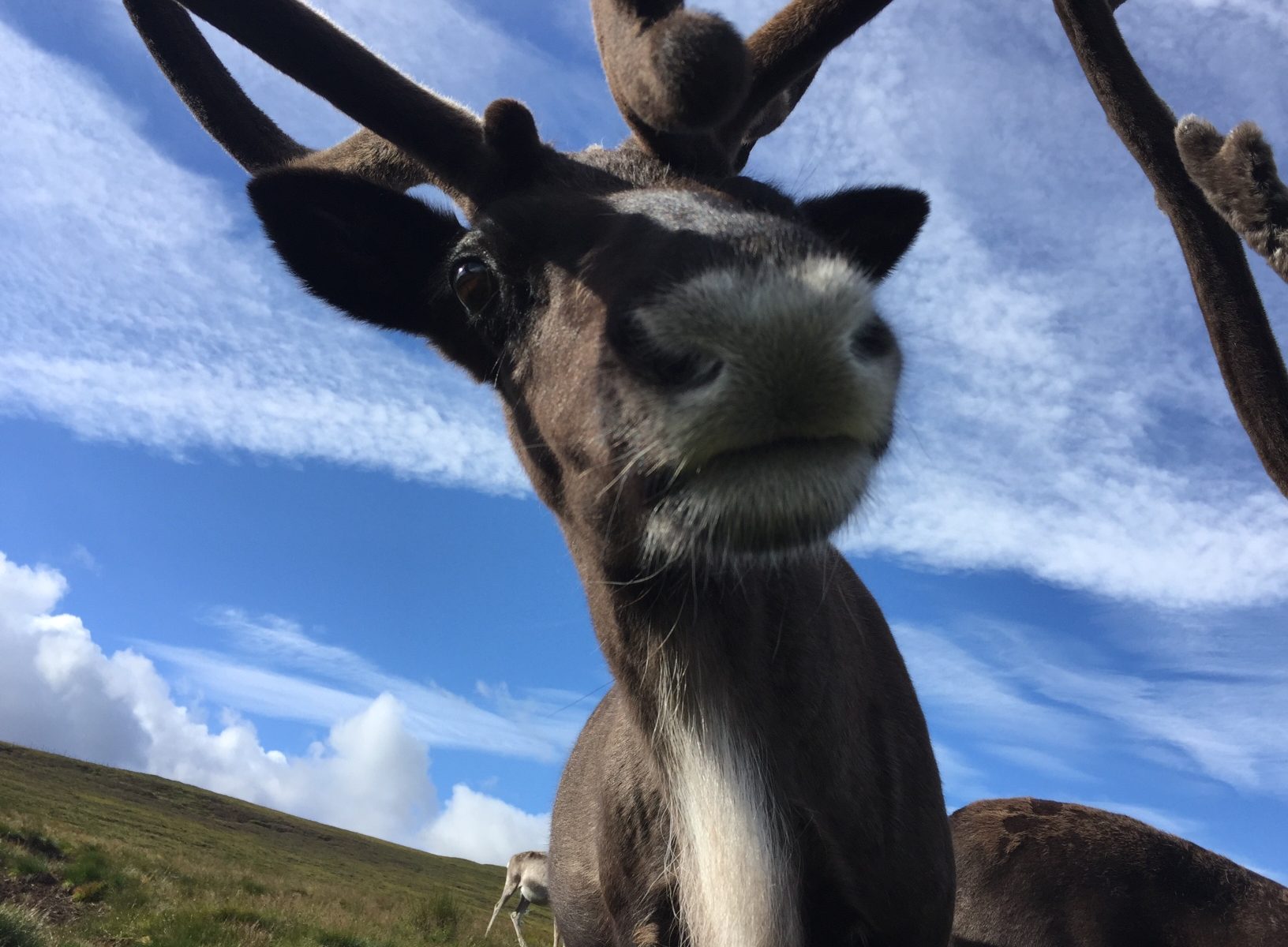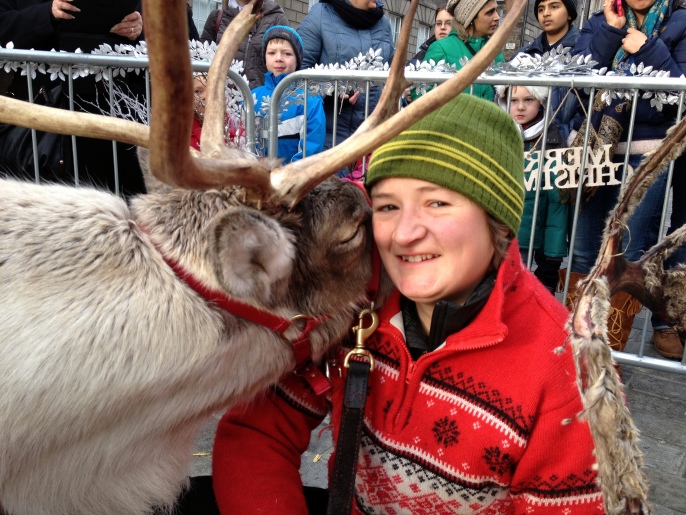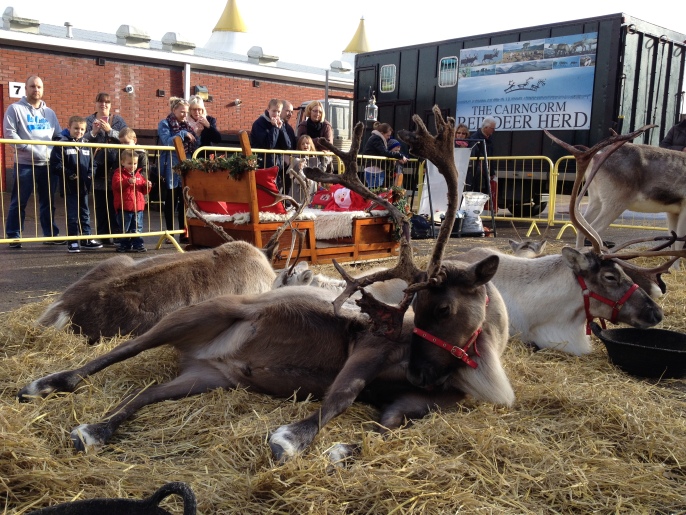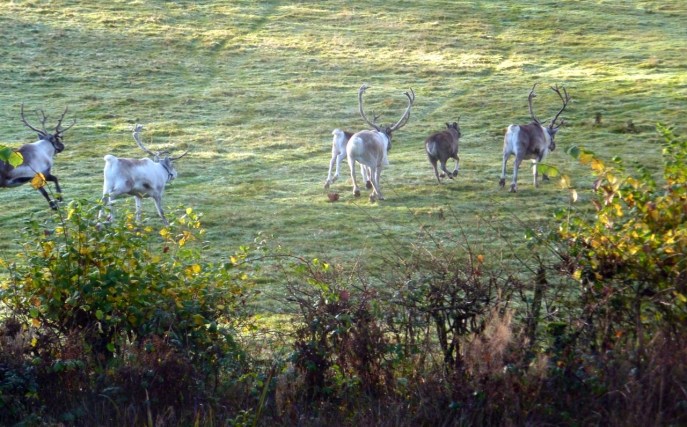Whilst we’re all still recovering from another busy Christmas season, I took it upon myself to accost some of my colleagues with some Christmas themed questions: There’s a limit to how fast I can type, so I didn’t manage to get down everything – some of the answers were very long, with lots of umming and ahhing! But you’ll get the gist. My chosen interviewees were Tilly (herd owner), her daughter Fiona (manager), and long-term employees Andi, Lotti, Ruth and Joe.
First up – FAVOURITE REINDEER TO WORK WITH AT CHRISTMAS(PAST OR PRESENT): I thought I was starting with an easy question, but apparently not, as lots of people had to come back to it later on once they’d had a think.
Andi’s response came after a short pause ‘At Christmas?… Nutkins. He wasn’t easy and you had to think carefully about which reindeer you paired him with, and which events would suit him, but he was such a fun reindeer.’ I’d like to add in here that Nutkins was, a lot of the time, a nutcase. A lovely reindeer, but undeniably a nutcase. He was one of those unpredictable characters – you never knew whether he was going to behave like a kid on a sugar high, or be utterly chilled. He played Russian roulette with us at every event.
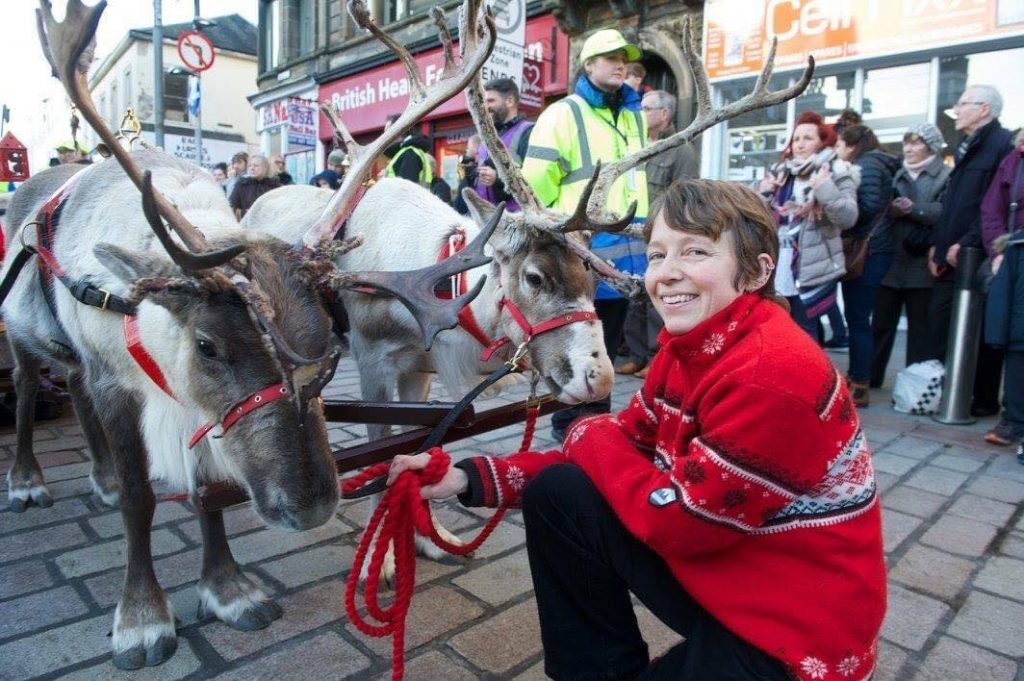
No pause for thought for Tilly though, her answer was quick! ‘Mystery, who was so loyal that he didn’t even need to be led, he just wandered along at the back at his own pace’.
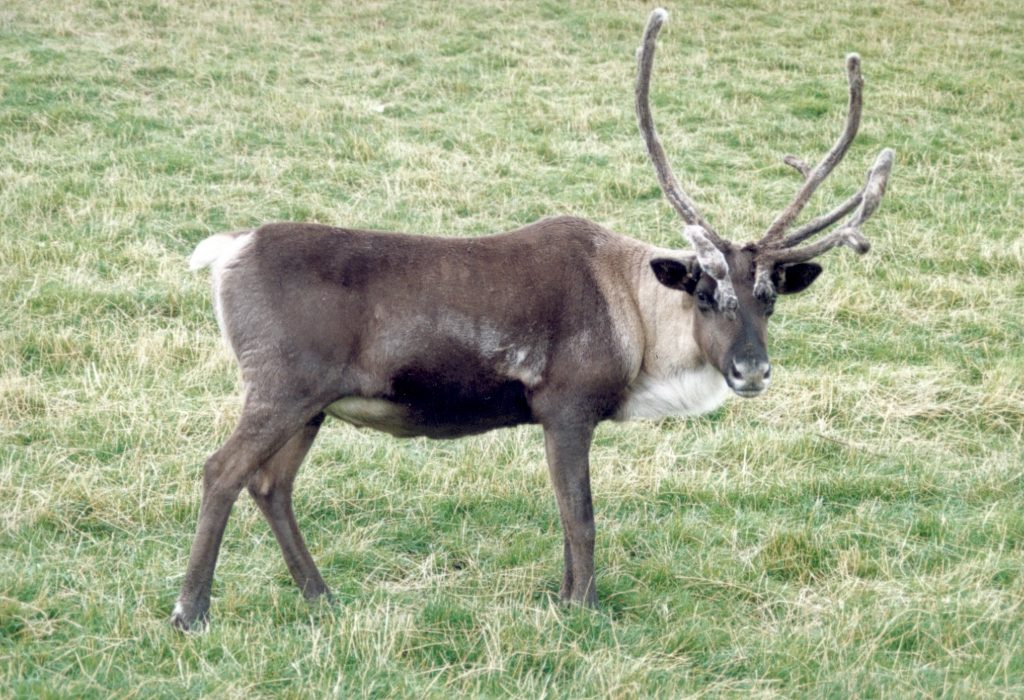
Scolty’s, somewhat surprisingly (to me, anyway), name came up several times, amongst other deliberations. Lotti: ‘Scolty. He’s very good at both the back and the front of the sleigh, and is an excellent role model for the calves’. Fiona: Scolty. Because he’s not too tame and he’s not too wild! He’s a thinker… like Dragonfly. Or maybe Dragonfly?’. Joe: ‘Probably Olympic. Or Baffin was good. Or Scolty. Well technically Kipling would be in there too, even though she’s a female. She has done some events as an adult though!’
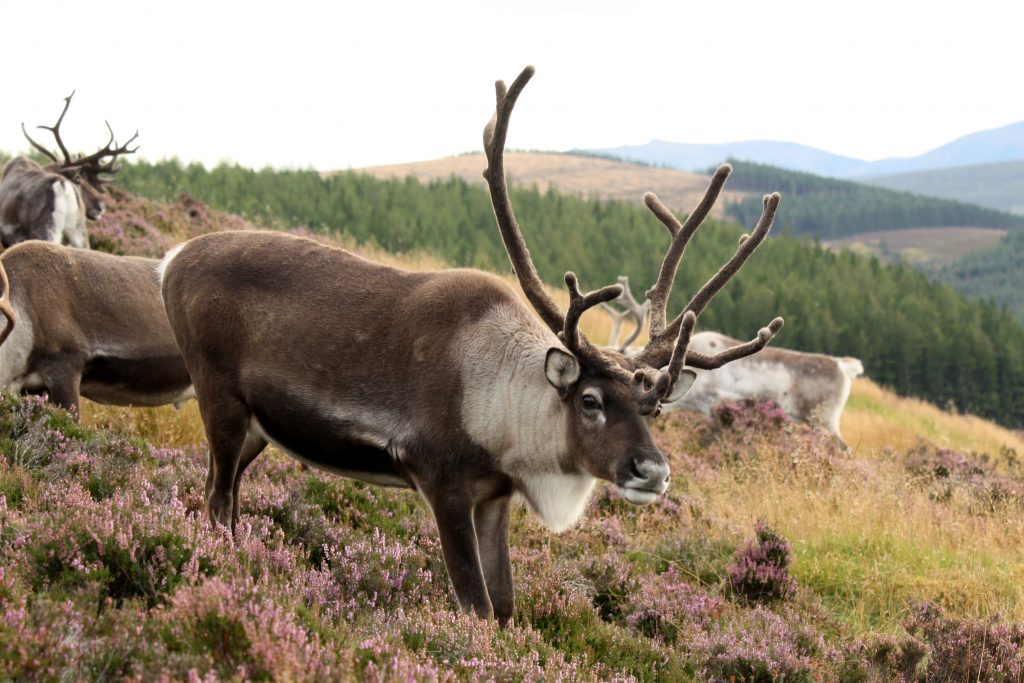
Ruth’s answer, when caught off guard, appeared to not be what she thought she would say… ‘The first reindeer to pop into my head, which was a surprise to me, was Poirot! He was just phenomenal this Christmas, and didn’t put a hoof wrong.’ And for myself, the answer would be Topi I think. He was a total professional at events and parades, bombproof, and would always fall asleep on our shoulders when waiting for the off at the start of a parade. I’m sad he’s no longer with us, he was one of the special ones.
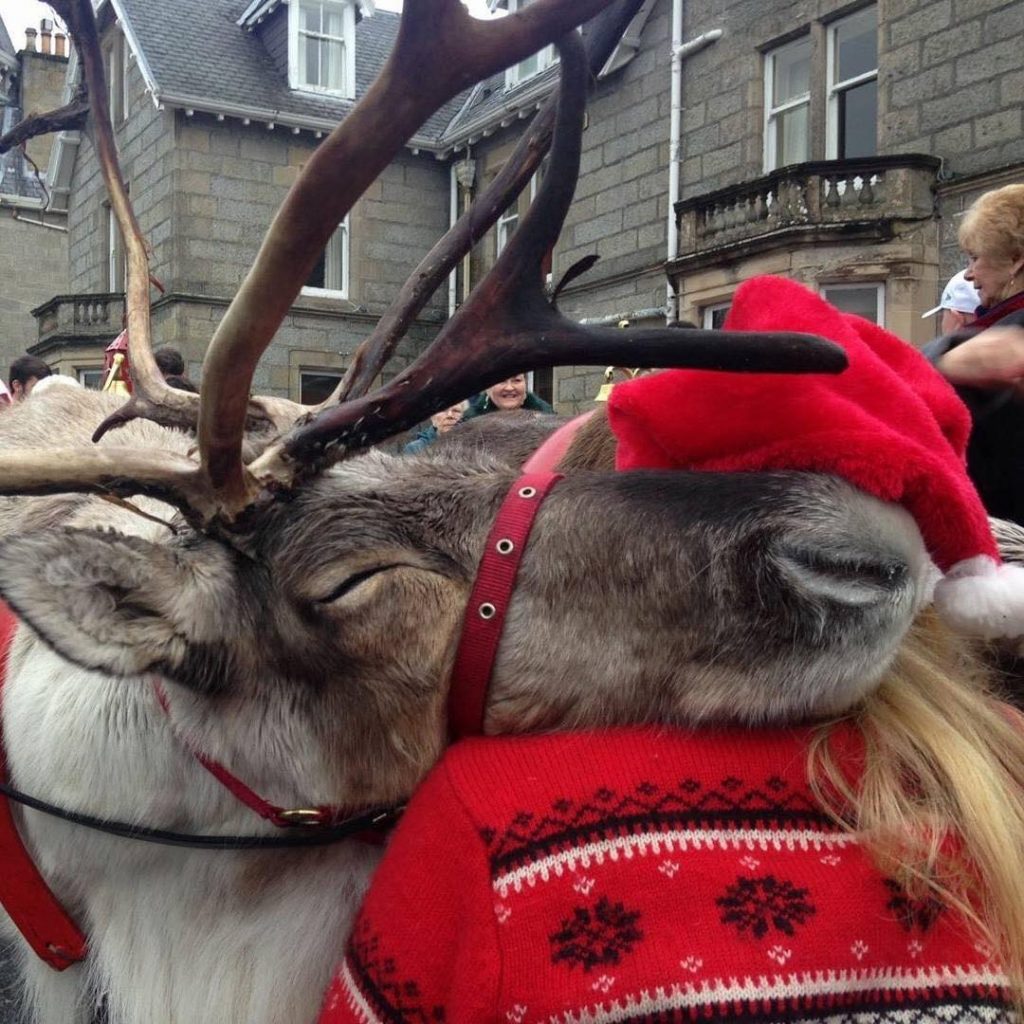
FAVOURITE EVENT? For those of us that have been around for years, this is a hard question as we’ve literally been to hundreds. Tilly has over 30 years of events under her belt! Some stand out whilst others – it must be said – all merge into one another after a while. On that note… Lotti: ‘I can’t remember which I’ve done! It’s all a blur!’
Andi: ‘Cowbridge in Wales [Editor’s note: we only go as far south as Manchester area these days, but Cowbridge (in South Wales) was a long-running event before that change]. An enormous but brilliantly organised event with all the police dressed as elves really took the biscuit!’ I also liked some of the biggest events like Cowbridge the best, where we were just a small cog in a large wheel. One of my other favourites was Wells [again, not one we do these days], where we followed a choir singing carols, which is far more festive than loud Christmas music blaring out. I also like Banff, as we usually got a full Christmas dinner at the end before leaving.
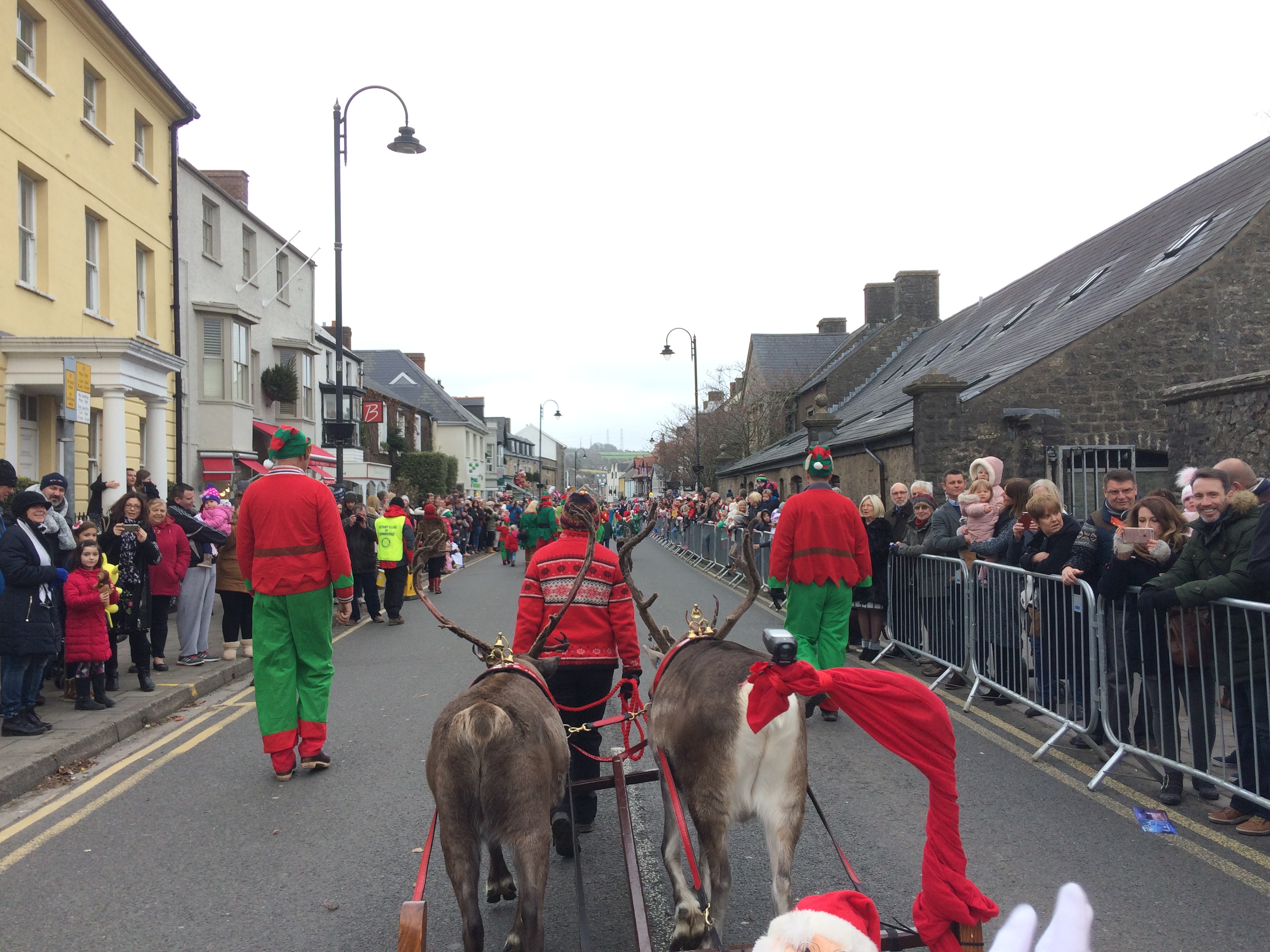
For Joe, it’s the smaller events nearer the day itself: ‘I really like the Christmas Eve events [Aviemore, Kingussie and Newtonmore]. Everyone is festive and happy, in good spirits!’.
Fiona and Tilly had – completely independently – identical answers. ‘The Duke of Gordon Hotel – it’s the last one.’ Predictable – by the end of the season they are knackered and ready to put away the harness till the following year! Tilly did add ‘Yee haa, back home for yummy dinner and lots of alcohol afterwards’ too! And as for Ruth’s favourite event? Got a least favourite one… that count?’. I’ll not elaborate.
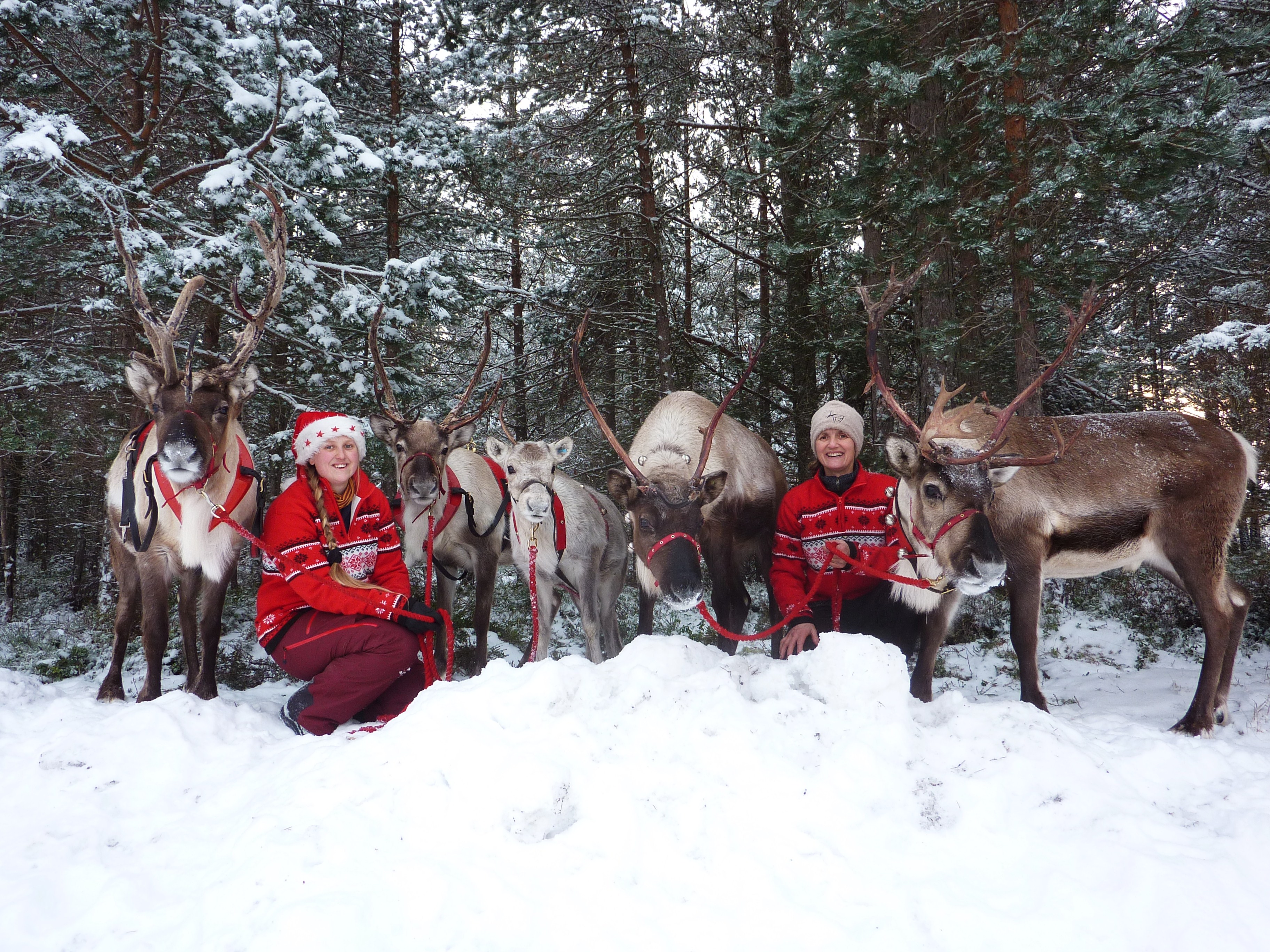
FAVOURITE CALF BORN IN 2022? This was met with squeals of horror at the prospect of having to choose! I refused to let anyone cop out with ‘all of them’ though. Nuii was a front-runner, ‘The cutest, pint-sized perfection of a calf!’ (Andi) and Lotti had a particular reason for choosing her: ‘Since I thought she was still-born at first, but then she was fine. But oh goodness! SO difficult! They are all very lovely!’
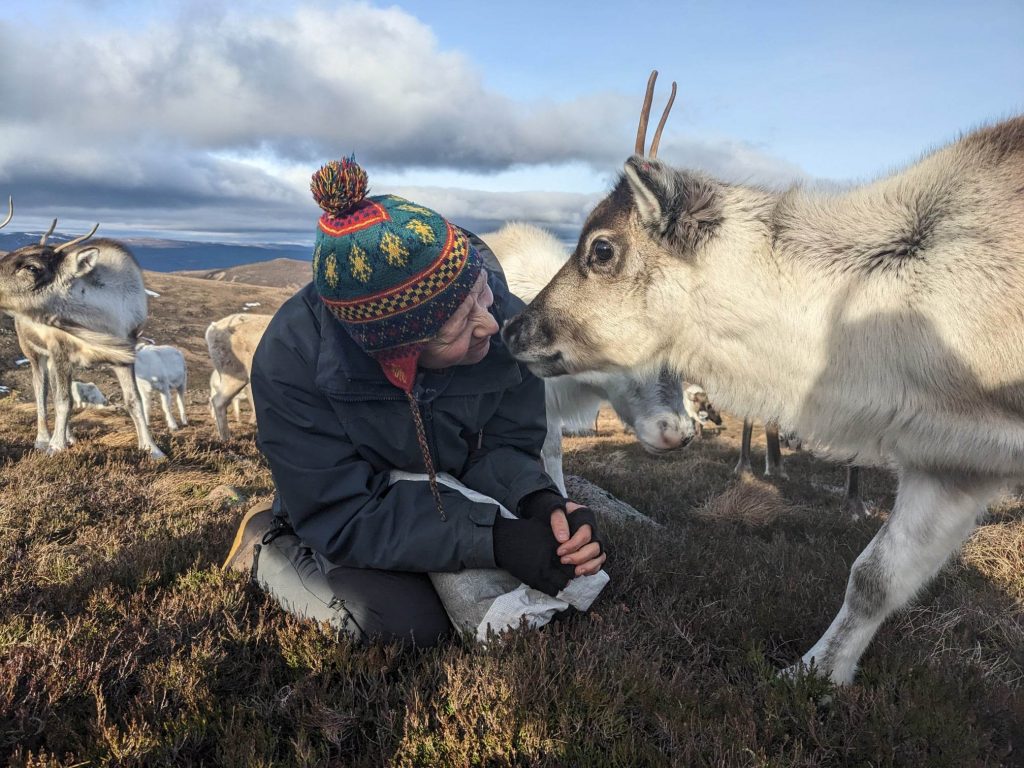
Ruth was horrified at such a question. ‘Oh Hen, this is mean! [loooong silence] I’ll go with Lolly, since Lotti and I were the ones to bring her in from the free-range… although… Zoom’. Another vote for Zoom came from Tilly ‘A great wee success story and the best friend of Sunny’. Sunny is the calf we hand-reared in 2022, and living at Reindeer House, Fiona was responsible for him a fair bit of the time. I had no need to ask her who her favourite calf was (but I did anyway). ‘Ummm… Wafer. Only joking!’. Another predictable answer came from Joe: ‘Tub. Did you guess that?!’ (Tub’s mum is Joe’s favourite reindeer, Kipling).
This proved a hard question for myself though. As I’ve managed to effectively retire from attending Christmas events these days, instead remaining at Reindeer House, it means I didn’t work quite as closely with some of the calves as others did. It was Choc-ice to start with, as I was so delighted that Cheer had actually had a calf and that he was tame in comparison to her (Cheer is a very shy reindeer) – but he’s turned into a real brute and his little pointy antlers have been responsible for bruises on my backside over the last few months, so I’ve gone off him…
More to follow in a future blog!
Hen

